INSIDE
City passes 2 measures in May to aid local businesses. P. 3



The College Park Arts Exchange goes virtual. P. 12
Happy Pride Month from the Here & Now!

INSIDE
City passes 2 measures in May to aid local businesses. P. 3



The College Park Arts Exchange goes virtual. P. 12
Happy Pride Month from the Here & Now!
College Park’s small businesses have been impacted by the public health emergency, but the effect of the state-ordered closures has not been uniform. Local restaurants have been offering takeout and delivery, and, as we reported last month, some fitness studios have gone virtual. Other businesses, including Gailes Violin Shop, Vigilante Coffee Company and Big Planet Comics, have been reduced to fulfilling the occasional order.

 By Jasmy Methipara
By Jasmy Methipara
The North College Park residential neighborhood may see some developmental changes in its future. The owner of the 16-acre Stone property, adjacent to Davis Hall, is looking to shift gears. This wooded and partially developed property wraps awkwardly around Davis
College Park community members came together on the evening of June 4 for a candlelight vigil and silent reflection to mark the death of George Floyd, an African American who was killed on May 25. Four Minneapolis police officers have been charged in Floyd’s killing. Earlier this month, the city council also reflected on the painful racial realities raised by his death, which prompted pro-
tests throughout the nation.
“I will be on the front lawn of St. Andrew’s with a candle, holding a silent vigil for the people of our country,” wrote Reverend Timothy Johnson, the church’s pastor, in a Facebook post announcing the event. “For an end to racism in all forms; for an end to hatred and division; for justice; and for peace. All are welcome to join me ... Please bring a candle if you have one.”
Over 200 participants, including students,
families and public officials, responded to his invitation and joined the pastor in a quiet yet emotional ceremony on the church lawn.
Attendees brought candles and quietly shared each other’s light while wearing masks and observing social distancing guidelines.
“I was very moved,” said Carla Lambert, an African American from Silver Spring who attended with her 25-year-old daughter Brittany. “...even though we’re
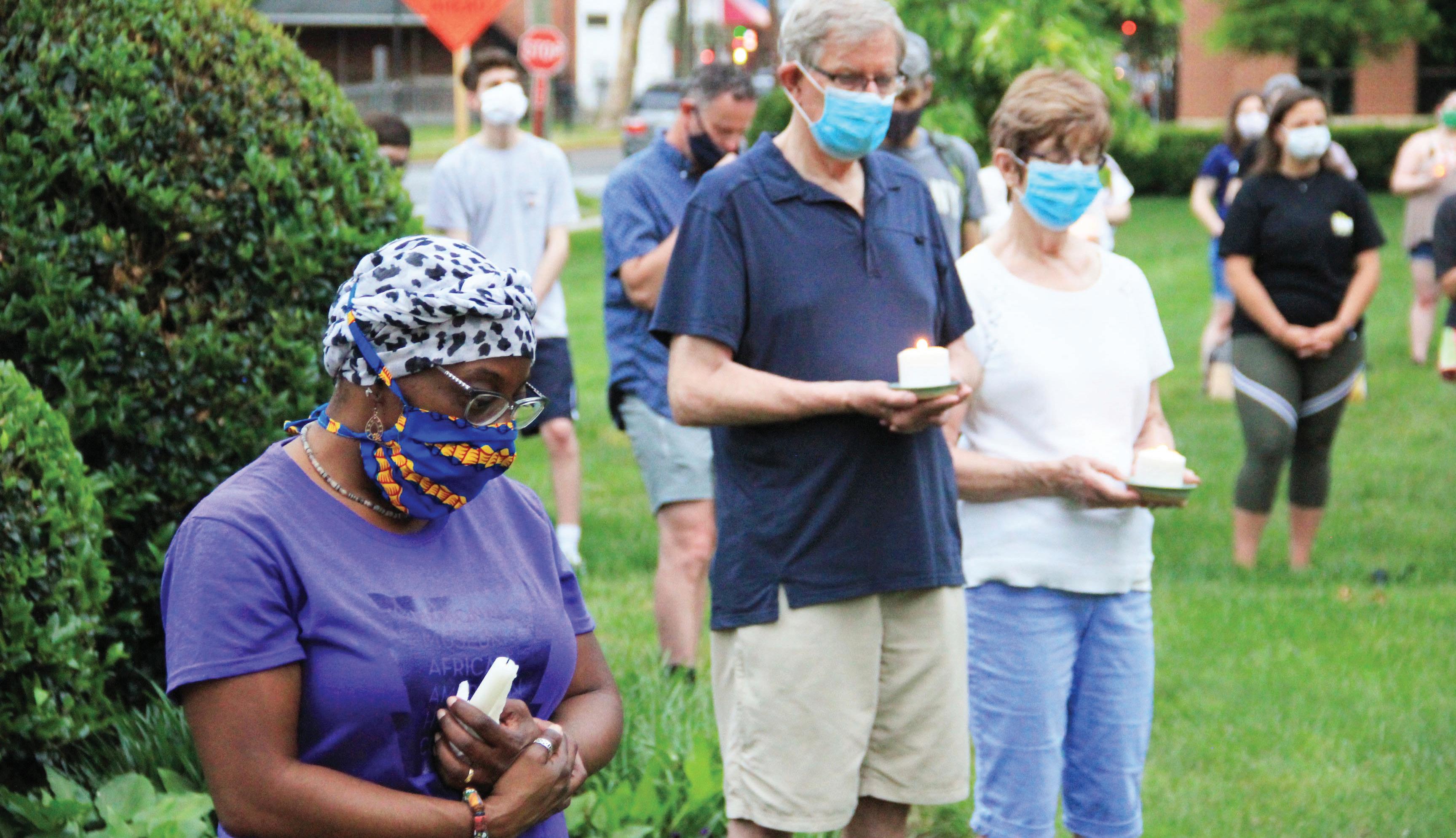
When I began my first of three terms as College Park’s mayor, I declared my intent to improve collaborations between the city and the University of Maryland, and also Prince George’s County. We were in the second year of the Great Recession following the Bush financial collapse of 2008. Our local context was bleak: Our county executive was corrupt, our university was detached, and our city felt embattled. Today, collaboration is the local norm,
and the spirit of campus-community partnership prevails. But our record of cooperative work in recent years cannot shield us from harm during this pandemic. Unfortunately, Prince George’s County’s COVID-19 numbers are higher than any other county in Maryland and the Washington metropolitan area. Our numbers are rooted in a national and regional legacy of racism that has led to disparities in health, housing, educational opportunity and justice.
The murder of George Floyd put a glaring global spotlight on this legacy of injustice. Just three years ago, Richard
Collins, a black student graduating from Bowie State, was killed by a white Maryland undergraduate here in College Park. We have a long road to justice — locally, regionally and nationally. Today’s toxic core may be in the White House. As we witness and extend thousands of acts of kindness every day in our community, it is also time to step up to our own strategic part in defeating the sociopathic disaster that is Donald Trump. He didn’t invent or cause all of our problems, but he is the gasoline being thrown on the fires of our time. There is no better time to be alive and fighting
The Rhode Island Avenue Trolley Trail, which threads for almost four miles through town, started life as a streetcar right of way. In 1893, long before the city was incorpo-
rated in 1945, the streetcar line ran from the District to Hyattsville. In 1900, it was extended further north through Riverdale and into the Berwyn and Branchville neighborhoods. When streetcar service on the Rhode Island Avenue
Managing Editor Mark Goodson mark@hyattsvillelife.com
Associate Editor Nancy Welch nancy@hyattsvillelife.com
line was terminated in 1958, the line extended only as far north as Berwyn.
The Capital Transit Company purchased several parcels of property to extend the streetcar line to Berwyn. At the time, most of the development
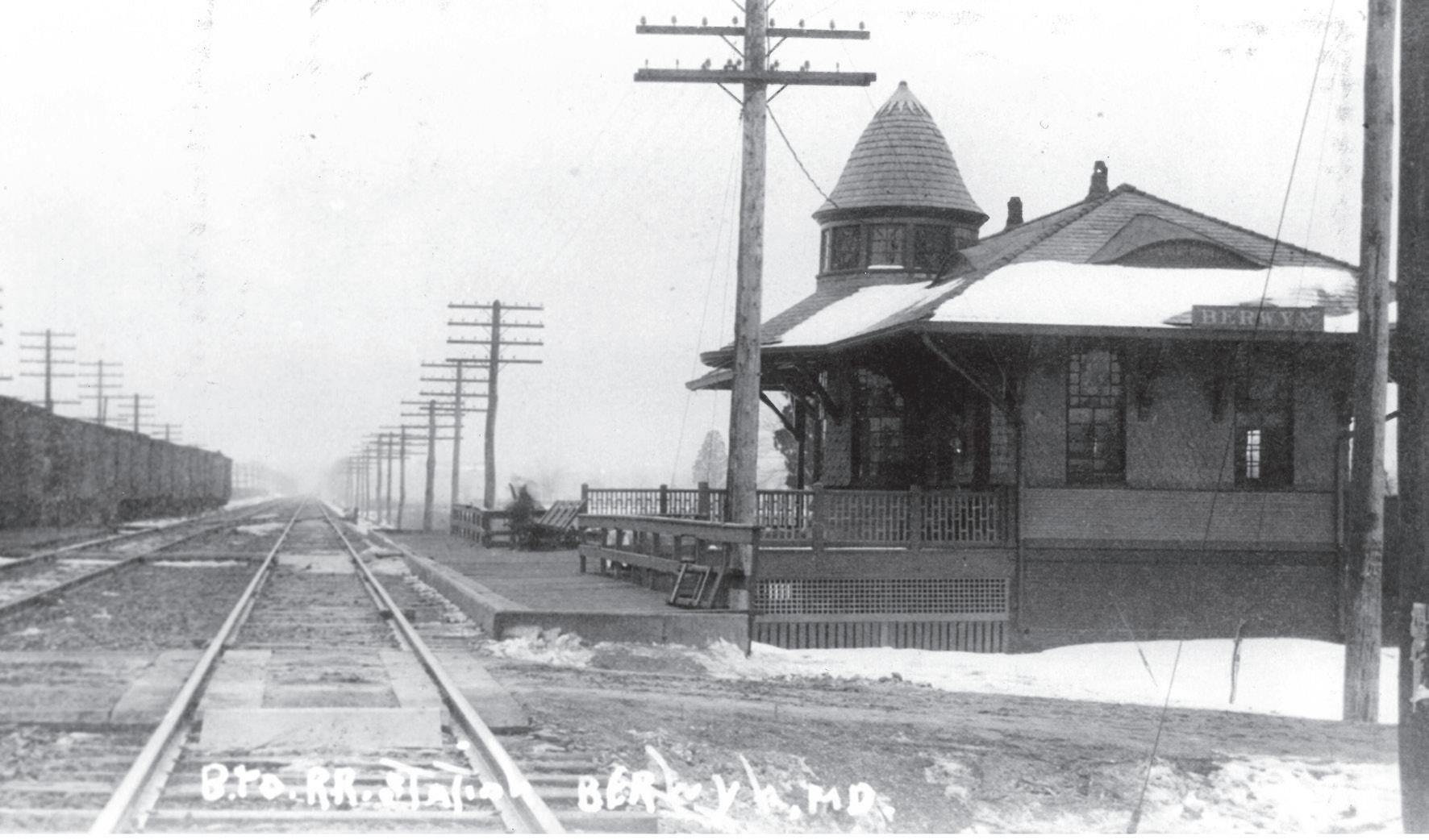
to make the world a better place.
Andrew M. Fellows was mayor of College Park from 2009-2015. He is currently on the faculty at the University of Maryland’s College of Information Studies and is also affiliated with the National Center for Smart Growth.

Interested in writing a letter to the editor? Email Mark Goodson at Mark@ HyattsvilleLife.com.
in College Park existed in the Berwyn, Branchville and Old Town neighborhoods. Onehalf mile to the east, a cluster of Victorian homes stood near the Baltimore and Ohio Railroad line. One-half mile west were some scattered homes and accommodations for travellers, including the Rossborough Inn.
In College Park, the right of way was privately owned, and it remained that way even after the streetcar line was abandoned in 1958. The right of way through College Park was not visibly marked, but it generally was 60 feet wide and almost 1.6 miles long. After streetcar service ended, the right of way sat dormant until the early 1990s, when the Washington Suburban Sanitary Commission installed a 30-inch water line along the stretch from Calvert Road to Greenbelt Road.
tle Paint Branch stream, which dated to 1900, had deteriorated and needed to be redecked. A second bridge had to be constructed over an overflow channel, as well. The Prince George’s County Park and Planning Commission agreed to pay for this work because of its location in the county’s stream valley park. Construction began in the summer of 2001 and was largely completed in 2002.
Today, the Rhode Island Avenue Trolley Trail extends from College Park’s northern boundary south through Riverdale Park and Hyattsville. It serves these communities both as a recreational trail and a pathway providing access to workplaces and shopping venues, and to other trails that connect to Washington, D.C. and Montgomery County.
The College Park Here & Now is published monthly by Hyattsville Community Newspaper, Inc., a 501(c)(3) nonprofit corporation. Editors welcome reader input, tips, articles, letters, opinion pieces and photographs, which may be submitted using the mailing address above or the email addresses provided.

Layout & Design Editor Ashley Perks Advertising advertising@hyattsvillelife.com
301.531.5234
Writers & Contributors Robert Catlin, Sydney Clark, Andy Fellows, Julia Kyles, Jasmy Methipara, Eric Olson, Alexandra Radovic, Kylie Rau, Lila Stiff, Philip Van Slooten
Board of Directors Joseph Gigliotti — President and General Counsel Chris Currie — Vice President Reva Harris — Treasurer Rosanna Landis Weaver, Gretchen Brodtman, Debra Franklin, T. Carter Ross, Emily Strab Mark Goodson — Ex Officio Maria D. James — Ex Officio
Circulation: Copies are distributed monthly by U.S. mail to every address in College Park. Additional copies are distributed to popular gathering spots around town.
Total circulation is 9,600.
CPH&N is a member of the National Newspaper Association.
In 1994, the longtime owner of the right of way, O. Roy Chalk, lost control of the property as the result of the conclusion of a 30-year-old lawsuit over the legality of an early 1960s fare increase imposed by Mr. Chalk’s privately owned enterprise, the DC Transit Company. (Mr. Chalk owned this company from 1956 to 1972. It later became the Washington Metropolitan Area Transit Authority.)
In 1996, the City of College Park purchased the right of way within the city limits from its then-owners, D.C. Transit Riders, for $53,500. The city spent a year and almost $60,000 to survey of the property and conduct title searches to determine the property’s boundaries. These searches showed the property to be almost 12 acres in size.
Full use of the trail was hampered for several years because the streetcar bridge over the Lit-
When it was constructed, the trolley trail was generally well lit either by lights installed along the trail or by existing lights on adjacent streets. A 1,700-foot stretch through Park and Planning property in the Lakeland community, from Campus Drive north to Pierce Avenue, had no lighting, though. In 2007, the city authorized $28,000 to have PEPCO install lights in an effort to increase safety.
A second safety issue arose where the trail crossed Campus Drive. In 2011, the county, which owned the road, installed a pedestrian walk light where the trail crosses the road.
In 2019, over 800 people and 40 businesses participated in the city’s first Trolley Trail Day. Due to the pandemic, this year’s celebration, originally scheduled for Saturday, June 13, has been postponed until further notice.
During May, the city council unanimously passed two COVID-19 relief measures for area businesses. The second package, funded in part by the federal CARES Act, addresses some of the shortfalls inherent in the first and aids residents and nonprofits, as well.
On May 12, the city council approved COVID-19 relief efforts for local businesses. This initial package included a waiver of business license renewal fees through the end of Fiscal Year 2021, suspension of commercial sign and banner code enforcement, and a letter signed by the mayor encouraging landlords to delay or forego rent payments when financially feasible. The council also established a subcommittee to look into grants and other options.

City Manager Scott Somers said that this initial effort is intended to improve economic conditions in the city. “The first item is a waiver of the [license] renewal fees for any commercial business in the city, including hotels and motels,” Somers said. “The council felt it was difficult to require a fee when many businesses aren’t open. This waives those fees until next June.”
Council Member Kate Kennedy (District 1) said the efforts were an acknowledgement by the city government of the economic pressures local businesses are facing during the crisis.
“We are in this for a while,” she said. “So we are triaging what we can do quickly to help. These things were easy to say yes to without a huge impact on our budget, while still supporting our businesses.”
A few residents at the May 12 virtual council meeting were concerned about not collecting an estimated $60,000 in fees from hotels which may have large corporate owners from out of the area. Residents stated that because these larger corporations are equipped to weather the crisis, the city should collect and use those fees to lessen the fiscal burden of residents.
However, Councilmember Maria Mackie (District 4) explained, “hotels are businesses that operate in our city ... we don’t want our hotels to go out of business ... they generate income for our city. They’ve been closed for over two months at the end of May. That’s a long time for not having an income.”
Mackie also stated that while $60,000 may be seen as substan-
decorate light poles during the holidays and a 5K run down Route 1 which helped unite the small businesses along the path. But Lee also acknowledged that waiving fees could not begin to compensate businesses for their losses related to the pandemic.
“I want to be positive about it,” she said, referring to the city’s relief efforts. “But I’m also trying to run a business. A lot of us are like that, working from home and multitasking with a family. It’s hard. I start my day at 5:30 a.m. and don’t end until 11:30 at night. And working from home, you don’t have all your tools. It’s tough.”
Vigilante has been offering delivery and curbside pick up during the pandemic, and he felt that the suspension of banner enforcement would help him get the word out that the café was still open on a limited basis.
Even in mid-May, many business owners, including Lee, were waiting for funds that they applied for as far back as March. As of press time, the SBA and state websites indicate that relief grants are closed to new applicants due to insufficient funds.
health-related measures, and $100,000 in additional funding for nonprofit organizations such as Meals on Wheels and the College Park Food Bank.
Program funding, excluding the Modified Business Assistance and Facade Improvement Program, is reimbursable through the federal CARES Act, according to a blog post by Councilmember Fazlul Kabir (District 1).
tial if viewed in terms of individual income, it is not in terms of the city’s budget, relative to the magnitude of the crisis.
Anna Lee, co-owner of Stripe 3 and president of the Downtown College Park Management Authority, appreciates the city’s efforts to make College Park feel like a community. She mentioned the wreaths which
Lee still finds time to help out her College Park neighbors, though. Stripe 3 started a campaign to collect food donations for hardhit Prince George’s County. Lee also reached out to the University of Maryland’s Office of Community Engagement with an offer to sponsor the lighting of the Memorial Chapel to honor graduates of both the university and Prince George’s County Public Schools.
Chris Vigilante, founder of Vigilante Coffee Company, which has a location in College Park, was also encouraged by the city’s efforts to support local businesses.
The city council passed a second aid package on May 26 to provide additional economic relief through four new programs with combined funding of up to $1,450,000. To be eligible for this funding, businesses cannot have more than 10 outlets or belong to national franchises.
These initiatives include a $1 million fund for direct aid to local small businesses impacted by COVID-19 restrictions, a $200,000 fund providing emergency financial aid to individuals to cover expenses such as rent and mortgage payments, a $150,000 fund to assist businesses in implementing improvements addressing social distancing and other
“I’m excited that at tonight’s Council meeting we moved forward with four programs to financially help small businesses, nonprofits and residents struggling during COVID-19,” Councilmember Kate Kennedy wrote in an email. “Over the last few months, as I’ve talked with business leaders and neighbors about their struggles, I have been anxious to get help out as best we can, as quickly as possible.”
During the meeting, Councilmembers John Rigg (District 3) and Maria Mackie expressed concern about students’ eligibility for and access to economic assistance. Both suggested using federal student aid award letters —Pell or FAFSA — or similar documentation, to establish eligibility.
“Over the last few months, as I’ve talked with business leaders and neighbors about their struggles, I have been anxious to get help out as best we can, as quickly as possible.”
Kate Kennedy councilmember
University of Maryland (UMD) researchers received five grants from the National Science Foundation (NSF) to continue their efforts to learn more about COVID-19 and its impact on society.
NSF is distributing Rapid Response Research (RAPID) grants to scientific research groups nationwide that are working on ways to respond to the virus.
Kathleen E. Stewart, director of the Center for Geospatial Information Science at UMD, said the RAPID grants are typically time-sensitive awards that are made during crises like severe weather events.
“Now with the pandemic, that’s another kind of crisis where Rapid Response Research is useful,” Stewart said.

She said that RAPID grants don’t have an application deadline and are given out fairly quickly after project proposals are submitted, to expedite the research process.
Stewart, who also serves as the principal investigator for
one of the five research projects at the university, was awarded almost $82,000 a few weeks after applying.
“Unlike other grant competitions where you have a deadline, it’s up to the individual investigators to pull a team together to come up with an idea ... [and] you then approach NSF,” she said.
Her current team of five people, including co-principal investigators Debbie Niemeier and Junchuan Fan, and two graduate students, are conducting research using “location-based, big-data to model people’s mobility patterns” during the pandemic.
Research shows that movement and travel can introduce risks, according to Stewart. She said her team is interested in examining how people have modified their travel behaviors because of the pandemic, and added that communities are typically grouped by census tracts or zip codes.
“We want to look at a big enough scale since our analysis uses big data in the sense of it could be thousands of vehicles
moving around, for example. We’re not trying to track individuals,” Stewart said. She and her team are still in the early stages of their research and data-crunching, but so far, they “definitely see that there’s continuous movement in different ways.”
“We’re still analyzing the degree to which [movement] relates to different population groups,” Stewart said.
Kartik Kaushik is the coprincipal investigator for another project at the university. He said his project team, led by principal investigator Debbie Niemeier, received a RAPID grant of approximately $87,000.
“It’s a big thing to get an NSF award, so we’re definitely very happy,” Kaushik said. “Now that we have the grant and since the pandemic is ongoing, the sooner we start [the research], the better.”
Kaushik’s team is analyzing how public health data and real-time mobility data can help inform policy and be linked to identify emerging hotspots and target critical actions during a pandemic.
One of the project’s goals is to “catalog and quantify the reduction in trips and the extent of curve flattening,” Kaushik said.
With many people practicing social distancing, the research team initially suspected that, while an individual’s travel
wouldn’t drop to zero, it likely would decrease significantly. Kaushik said his team found that wasn’t the case.
“Before the lockdown, on an average weekday, an average Marylander made 3.5 trips per day,” he said. “After lockdown, we saw the number of trips fall to about 2.9 trips per person per weekday, which is not a significant drop.” (To see mobility and social distancing stats nationwide, visit data. covid.umd.edu)
Kaushik said that he is interested to see where the project goes, especially as jurisdictions move through phases of reopening.
“We are expecting there to be an uptick in the number of trips, and we would like to see if that also correlates with an uptick in the number of cases,” Kaushik said.
The two remaining research proposals received RAPID grants of over $100,000.
Philip Resnik, an affiliate professor with the Institute for Advanced Computer Studies and the Department of Linguistics, is the principal investigator for the third research project which seeks to improve survey response to organizations through text messaging, in an effort to better assist areas highly affected by the novel coronavirus. The project was awarded a RAPID grant of $176,785, according to the NSF award search tool online.
Principal investigator Long Doan, assistant professor of sociology, received a RAPID grant of $110,399. His team will assess social impacts of COVID-19.
Finally, Jelena Srebric, acting associate dean of research at the A. James Clark School of Engineering, received a grant of $200,000 to examine options for energy-efficient disinfecting measures in public spaces.
Author’s note: The University of Maryland’s Maryland Transportation Institute has developed an interactive data set, the COVID-19 Impact Analysis Platform, which shows mobility and social distancing statistics at the national, state and county levels.
For Prince George’s County, the percentage of residents staying at home rapidly increased on March 15 and peaked on April 12, when 51% of residents stayed at home. Consequently, the county’s social distance index score also peaked on April 12, reaching 79.
Since then, the percentage of residents staying at home has steadily declined. The most recent data accessed for this article shows that 36% of residents stayed at home on May 24.
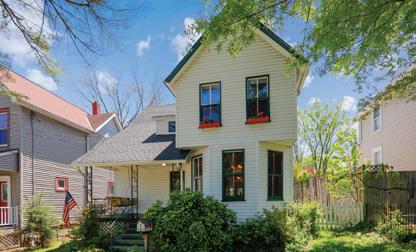

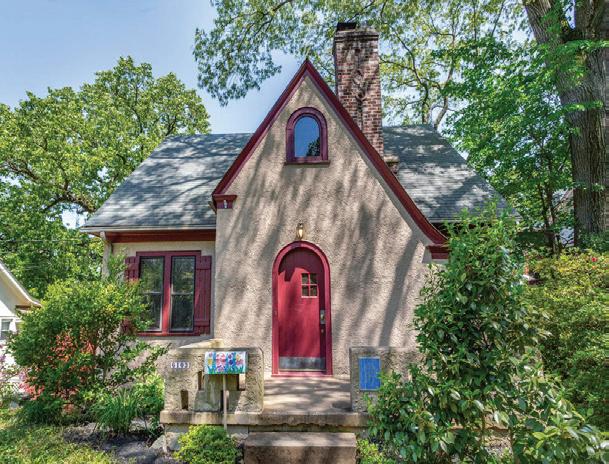
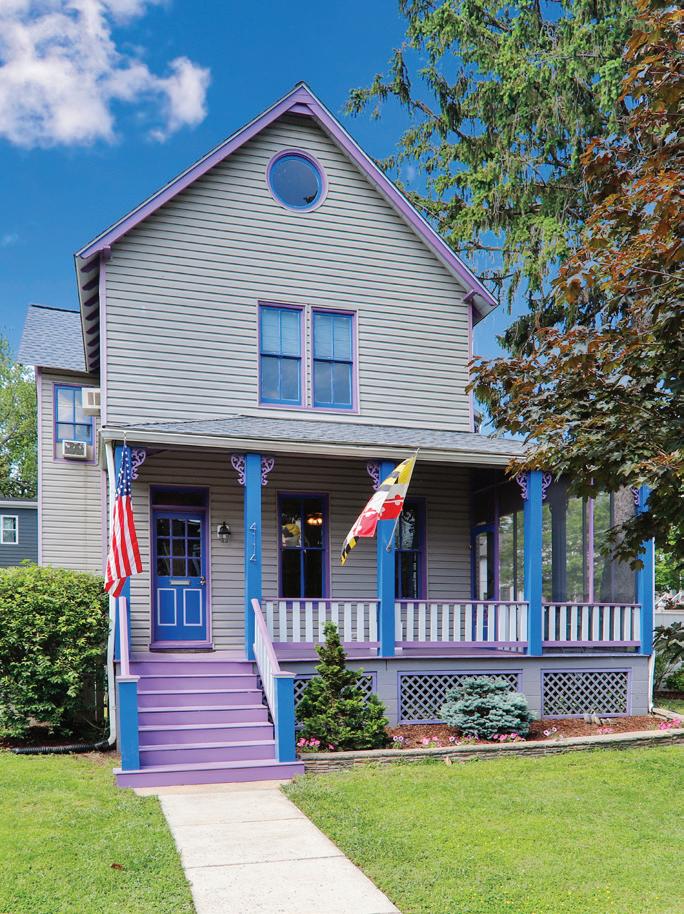



 By Philip Van Slooten
By Philip Van Slooten
The College Park City Council voted unanimously during their virtual meeting on May 12 to approve pandemic-related relief for area businesses. Approval granting a city revitalization tax credit to the developer of an apartment complex adjacent to the College Park Metro station met with a split vote, though, even as councilmembers on both sides indicated that the crisis was a major concern.
“We are in a different time than we used to be two or three months ago,” said Councilmember Fazlul Kabir (District 1). He voted against granting Gilbane Development Company the tax credit out of concern for the city’s decreased revenue. “If this were in January or February, we would be in a better place [economically] to support this type of tax credit. But I am worried about what [this] might hold in the future.”
According to the College Park Revitalization Tax Credit Program guidelines, the purpose of the credit is to “attract highquality redevelopment” to the city by providing financial incentives to developers. Councilmembers who voted for this measure were concerned that issues related to the pandemic could cause businesses to close or to leave the area.
This tax incentive starts at an amount equal to 75% of the increased city tax assessment for the first year, then steps down to 60% for the second year, 45% for the third year, 30% for the fourth year, and 15% for the fifth and final year.
“Over [a five-year] period, the developer will be getting a total of $701,542 in tax credit from the City,” Kabir wrote in his blog, pointing out the loss in tax revenue. He added, “Though I supported tax credits to a few other developments in the past, I struggled in supporting this proposal, mainly because of my concerns with the uncertain economic future ahead of us.”
In contrast, Councilmember John Rigg (District 3) voted for the measure, saying he also was considering the city’s economic future. While Kabir worried about decreased tax income, Rigg was concerned about the possibility of not receiving any income at all.
“To me, this gives the city an opportunity to convert a nontaxable parcel into a taxable parcel precisely when we will likely need the tax revenue most,” Rigg wrote in an email.
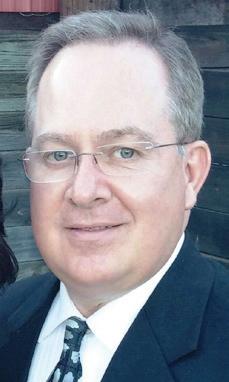
“Absent the incentive, it is possible — and perhaps likely — that the project may have been delayed or, as has happened twice with preceding project proposals, cancelled.”
City Manager Scott Somers and Councilmember Kate Kennedy (District 1) agreed that receiving some revenue on land that is currently generating none was worth the reduced tax incentive, particularly during the current crisis.
“WMATA is tax exempt and generates zero dollars in revenue,” said Robert V. Gilbane Jr., the vice president of Gilbane Development Company, referring to the current property owners. “We believe this project will deliver on a variety of strategic growth goals [for the city] and will be a welcome addition.”



Kennedy expressed similar concerns about not receiving any income from the property, as opposed to reduced income, noting that it took over twenty years for WMATA to identify a developer.
“We didn’t want to delay this any longer,” she said, explaining why she agreed to vote for the tax credit. “If we delayed it for two years, we wouldn’t get any money. We want it now. We need the income quicker.”
Kennedy also stated she was thinking about the needs of her community as well as the urgency of the crisis when she voted.
“Making this project happen sooner, even if it means sacrificing money we really wouldn’t have had anyway, it means residents will pay less out of their pockets in terms of property taxes,” she added.
Mackie (District 4) disagreed that the city had to accept a reduced tax payment or no payment at all. She voted against granting Gilbane the tax credit.
“I don’t feel like it’s all or nothing,” she said. “I think Gilbane had a very nice presentation, but if the tax credit was what was going to clinch the deal for them, then I felt like someone else will come along.”
Mackie was more concerned about people in her district who could use that tax revenue now.
“We give a tax credit to a big developer who is going to develop a very nice facility, and we have people in our city who are unemployed and are not getting unemployment [benefits],” Mackie said. “People who are self-employed and are underemployed. The College Park food bank empties out of food very quickly, and people still do
not have enough food to eat.”
Mackie admitted that she is new to the council, having been seated this past December, so she didn’t know much about the history of the project or the challenges to find a developer. She said, though, that the history paled in comparison to the challenges that the city’s facing due to the pandemic.
“I know a lot of my colleagues feel it is hard to get someone there, but I don’t feel that,” she said. “I think someone else will come in. I feel it wasn’t worth giving them the tax credit and then saying to the people of College Park that we can’t give you the help you need now.”
But Mayor Patrick Wojahn, who would have cast the deciding vote if there had been a tie, felt it wasn’t a question of whether or not Gilbane would have walked away from the
project if the tax credit resolution had failed. For him, the tax credit was the city’s way of recognizing the risk Gilbane was assuming in developing during a pandemic.
“I don’t think Gilbane is going to walk away. That’s not the question,” he said. “The question is, is it going to get the investment and financial backing it needs to go forward with the development, especially now. When the 2009 recession happened, there were housing developments that were slated to go forward but didn’t, and that was a significant risk, and it is right now as well.”
He explained that the commercial property tax credit, particularly during a time when economic hardship threatens the viability of new business ventures, helps mitigate the risk for a developer wanting to do business with the city.
“Even a wealthy developer has to weigh the pros and cons,” Wojahn said. “And they have to present a good case for continuing with a project, given the economic situation.”
Gilbane agreed.
“I realize it was a split vote [on this measure] and a difficult vote,” Gilbane noted. “And I appreciate the effort that went into making this tough decision at this time. I understand concerns in light of COVID where resources are at a premium. But if the project moves forward, you receive some tax revenue, and the tax credit burns off in fairly short order. The city gains the tax revenue and a host of other economic developments that comes with having a major development to retain [University of Maryland] graduates and attract new businesses.”

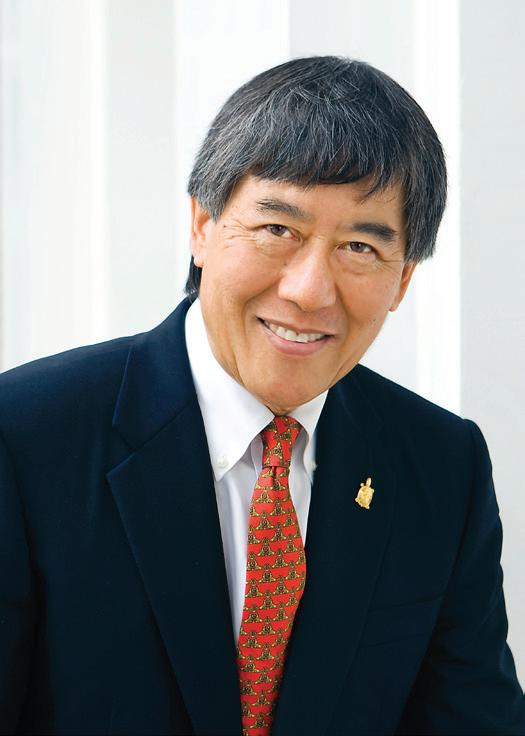 By Eric Olson
By Eric Olson
Dr. Wallace D. Loh’s tenure as president of the University of Maryland ends this month. His presidency led to a productive decade for College Park, one that saw a great deal of change in the landscape and much collaboration as the university engaged with the city and county. When Dr. Loh arrived in 2010, it was an uncertain time, as the world was emerging from the Great Recession. Whatever economic momentum existed before the 2007-2008 housing crash had evaporated, and Prince George’s County was
hit harder, and for longer, than many other jurisdictions. There was much work to be done, and those of us who were elected officials were eager to work with Loh.
The College Park City-University Partnership, chaired at that time by Senator Jim Rosapepe, had been developing a 10-year plan, the 2020 University District Vision. The plan focused on moving our community forward in the areas of education, housing and development, transportation, public safety and sustainability. Dr. Loh not only embraced this vision, he put the full weight of his of-
It has not been a typical spring. For better and for worse, this spring has felt more or less eternal. The psychological time warp that so many of us are grappling with has been the subject of much analysis — and far more baffled head shaking.
Then there’s the weather. In recent years, the DMV’s “spring” has brought an alarmingly warm spike in February, a glorious but storm-ridden cherry blossom celebration, and then two nice weekends before it was time to start thinking about installing the A/C units and mowing the lawn. Not so, this year! Steadily cool temperatures and a remarkably late last frost have made for something of a perpetual spring, which has in turn, rendered this a jubilee year, of sorts, for gardeners.
Never before have I been able to devote so much attention to my garden, and never before have I derived such pleasures from it. For the first time in my gardening life, I’ve actually gotten in all of the seeds I overzealously purchased in January.
We’ve even stayed somewhat on top of the weeding. My husband, who’s been working from home, joins me in the garden some mornings, digging out beds, turning the cover crops and planting. We’ve had overwintered kale with breakfast, and lunch, even dinner some days, and it has felt like the apex of luxury. (There is nothing like overwintered kale; I plant seeds directly in November and leave them be, without any fuss, right through snow. In March, my kale has a sweetness and complexity that is reason enough, itself, to garden.)
Seized by a desperate need to have more lilacs in my life, I’ve even dipped a toe into the world of plant propagation for the first time. On rainy days, I’ve sifted through garden tomes, sketching out long-term plans for what the many neglected patches of my yard could become.
There always are, and always will be, reasons why my garden isn’t perfect. Imperfection is, in part, the nature of gardening. But I am also an absolute amateur, and I have four children, a limited budget and too many other commitments to make perfection my goal. And College Park has a groundhog population the likes of which I have never encountered anywhere else.
Even so, I have reveled in gardening during these weeks of shutdown. Gardening grounds me, and it
has become my preoccupation and salve. Not everyone began the year as a gardener, but the pandemic has prompted many to start digging. A surge in demand for supplies, combined with closures, stalled many garden projects, but seed distributors and nurseries are starting to catch up. And it’s even a good time to get a head start on fall vegetable planting (If you’re looking for seeds and other supplies, Southern Exposure Seed Exchange is a favorite source of mine, and if they cannot fill your order, their website includes links to other heirloom seed suppliers in their network; you can visit them here: southernexposure.com).
If you can’t create a garden yourself, you can still find pleasure and delight in your neighbors’ accomplishments.
Follow my sister’s lead, for example. She lives in an apartment in Seattle and says that the best part of her day is her walk, when she checks in with her favorite tree in the neighborhood and ventures about to see what has bloomed, what has changed, since the day before.
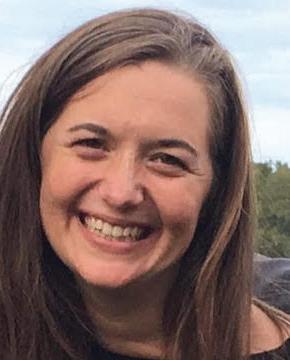
Here in College Park, I still take the same route I walked every day before the shutdown, but my awareness and appreciation of it are far more vivid than before. The flush of each flowering tree, every great patch of bulbs, the intriguing glimpse of an exceptional backyard vegetable garden, the curious flowering bush I wasn’t able to identify for weeks, the brilliant fencing solution one neighbor has contrived — each of these is now mapped in my mind.
And I’m not alone. My neighbor put in new beds. Another offered cuts from a lilac bush. As I weed, folks walk by and they often stop; we talk. These daily observations and interactions, as simple as they may seem, have been a gift in this time. Through them, I have come to believe that all gardening is community gardening. And just as quarantine has made us all far more aware of how much we need our neighbors, I’m newly aware of just how much I need their gardens!
Lila Stiff gardens in the yard of her College Park home..
fice behind the effort to create a more vibrant community for residents, students and those who work in College Park.
President Loh’s commitment to collaboration and community development was not without risk. Early on, he tackled the challenge of deciding the future of the Purple Line light rail route across campus. He met opposition from some alumni and several quarters on campus. The Purple Line was facing lawsuits and other challenges, and uncertainty over its route across campus was contributing to the vulnerability of the project. But Dr. Loh was deliberate. He studied the issue, gathered information, and sought out smart-growth experts and engaged officials. He considered the interests of the university and weighed the importance of being connected to the region. In a decisive action, he greenlighted the project across the heart of campus, where a transit line will be most beneficial.
During his tenure, Dr. Loh contributed broadly to the university’s academic, research and fundraising efforts. His leadership led to investment and change across the community. The following list includes many, though certainly not all of the gains realized under Dr Loh’s leadership:
The Purple Line is under construction and will connect College Park and the university to the Metro system, Amtrak and three MARC commuter rail lines.
College Park Academy, a rigorous public charter school for grades 6-12, educates more than 600 students per year. The University of Maryland Child Development Center, a day care at the former Calvert Road School building, is set to open this year.
College Park’s new city hall, with university offices and a public plaza, will bring more office workers to downtown College Park. The Hotel at the University of Maryland, WeWork’s co-working space, and The Hall CP’s restaurant and performance venue transformed an empty lot into a bustling center of activity.
Discovery District start-ups and tech businesses, including the quantum computing company IonQ, CapitalOne’s tech incubator and the Adobe Software Research Lab, have brought more than 1,000 jobs to College Park in the past several years. Academic build-
ings — from the Clark School of Engineering and the Iribe Center for Computer Science and Engineering, to the St. John Learning and Teaching Center — are investments in world-class facilities that close the distance between the university and downtown restaurants and retail.
Baltimore Avenue improvements, including a lowered speed limit, adjusted traffic lights and additional lighting have resulted in a safer, more walkable downtown. The road is currently being rebuilt to create an attractive and more functional boulevard that is safe for pedestrians, cyclists and motorists alike.
More neighborhoods are covered by an expansion of university policing, and the Partnership’s Homeownership Program has enabled more than 60 university employees to purchase homes in College Park.
Dr. Loh’s many accomplishments speak to his deep belief that a university cannot be an island, an isolated “college in a park,” but that to thrive, it must be a university in, and part of, a community.
Both the university and our community will long remember and benefit from the collaborative culture he fostered for the university and the city, and for all who call College Park home.
Eric Olson is executive director of the College Park City-University Partnership.
Both the university and our community will long remember and benefit from the collaborative culture he fostered for the university and the city, and for all who call College Park home.Dr. Wallace D. Loh’s tenure as president of the University of Maryland ends this month. COURTESY OF UMD/JOHN T. CONSOLI

The last three months have been challenging to say the least. As the state begins to enter its second phase of recovery, the COVID-19 pandemic has and continues to affect our lives in numerous ways.
From working and schooling at home, to ordering groceries online or only ordering takeout, College Park residents have had to adjust their whole way of life. Unfortunately, for some, this crisis meant losing their jobs or livelihoods because of business closures or service disruptions. Many restaurants and businesses had to lay off their workers and/ or close their doors leaving their futures uncertain.
In response to the crisis, the City has created programs to address
resident, business, and non-profit organization needs.
The Council and staff have developed a plan with more than $1,500,000 in COVID-19 assistance to help those experiencing financial hardship during this difficult time. The goal of these programs and initiatives is to help our residents and businesses get back on their feet as the recovery process begins.
Currently, there are two programs that eligible College Park businesses can apply for: the Small Business Assistance Grants Program and the Modified Business Assistance & Façade Improvement Program.
The purpose of the City’s Small Business Assistance Grants Program is to assist small
businesses (and non-profits if allowed by CARES Act funding requirements) with 25 or fewer full-time equivalents (FTEs), with direct economic support for costs of business interruption caused by: required closures, voluntary closures to promote social distancing, or decreased customer demand due to the COVID-19 pandemic. Each business/owner can receive up to a maximum grant of $15,000 from this program.
The Modified Business Assistance & Façade Improvement program is similar to the existing program except that it does not require matching funds. For more information about these programs or to apply, please visit www.collegeparkmd.gov/ covid19assistance#businesses.
To further help our business community, the City authorized the following: waived non-residential business license fees until the end of FY2021 for retail and hotel/motel establishments; suspended sign or banner permits and regulations to help businesses advertise; and provided free parking in the City’s Downtown garage, City-controlled parking lots and meter and pay station controlled streets until the beginning of the University of Maryland’s fall semester.
By providing free parking in those areas, the City hopes to encourage more people to patronize those restaurants and businesses open through curbside takeaway or carryout. For a list of College Park businesses currently open, please visit www.collegeparkmd.gov/ covid19#openbusinesses.
The City has also created a program to provide financial aid for residents in need. The purpose of the City’s Emergency Financial Aid to Residents Program is to provide financial assistance to
Assistance continued on next page...


















families, senior citizens and other individuals who have been directly impacted by the COVID-19 pandemic.
Financial assistance may be provided for eligible expenses such as rent/mortgage payments to avoid eviction or foreclosure, unforeseen funeral costs, utility payments, and other emergency needs as deemed necessary.


Each eligible family/person can get up to a maximum of $5,000 per household for indirect payments to applicable payee (landlord, lender, Utility Company) and/or gift cards for eligible expenses from this program. For more information about this program or to apply, please visit www.collegeparkmd. gov/covid19assistance#residents.
To support our non-profit organizations that provide food to our residents, the City has given $64,000 in grants to the College Park Meals on Wheels and the College Park Food Bank. Both organizations directly help our residents who are food insecure or unable to procure food during this time. Their daily and weekly meal deliveries or food pantries have helped hundreds in our community who have needed it most.
The City has been working very hard to provide as much support as possible to our residents and business community. However, these are not the only resources for our residents and businesses. For a non-comprehensive list of federal, state, and county resources, please visit www.collegeparkmd.gov/ covid19. Further resources can be found on their websites.
Together we will get through this difficult time. For more information about the City’s actions during the COVID-19 pandemic, please visit www.collegeparkmd.gov/covid19.
More information about these economic assistance resources can be found at www.collegeparkmd.gov/ covid19assistance.
For a directory of College Park Businesses that are open during the COVID-19 pandemic, visit www.collegeparkmd.gov/ covid19#openbusinesses.


Incorporated on June 7, 1945, the City of College Park is turning 75 this year! College Park has been a center of education, innovation, and exploration and has made its mark in history; a place where creative minds pursued innovations and firsts in agriculture, flight and education. Today, the City of College Park is a thriving home to more than 30,000 residents, an internationally renowned university and the world’s oldest continuously operating airport.
While we are unable to celebrate in person due to the COVID-19 pandemic, we still want to celebrate with you! During this pandemic, we have seen so much amazing community spirit that we

would like to continue showcasing it through the Show Your College Park Pride Contest!


showcase our wonderful residents and their favorite memories. We can’t wait to see your creativity and what you’ll send!
We want to see and hear your stories and pride for College Park! Submit your videos, drawings and photos of your College Park spirit. All video and image entries will be made into a video collage to


By submitting your favorite memories, you will be entered to win a $50 gift card from the College Park business of your choosing (as long as the business you choose has the capability to issue a gift card, certificate, voucher, etc.). Winners will be randomly selected. For more information on how to enter and contest rules and guidelines, please visit our website at www.collegeparkmd. gov/75thanniversary.
We can’t wait to see and hear your College Park Pride! Happy 75th Anniversary, College Park!
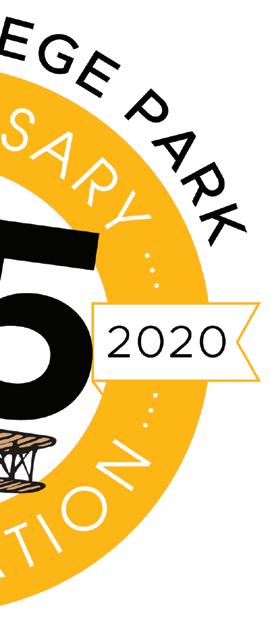
The City of College Park is working on our next 5-year Strategic Plan for the City and we want your help! Our goal is to capture our residents’ feedback to ensure we understand where you see College Park in the future.
We have three virtual public focus groups remaining, so act fast to share your thoughts and perspective. Each focus group will have eight participants; to participate, you must register for a spot.
Below are the available dates and times:
• June 20 at 8:45 am
• June 20 at 10:15 am
• June 20 at 12:00 noon
To register for a focus group and find out more information, please visit the City’s website at www. collegeparkmd.gov/strategicplan.
After registering, you will need to complete a demographic survey. Survey completion is required for registration, as the data collected
will be used to compare participants demographic information to the entire College Park population. A link to the demographic survey can be found at the link above.
If you are unable to participate in these focus groups, the City will have a two-week window for residents to fill out a Community Dreaming Survey to provide their perspective on the future of College Park. The survey will open in late June 2020 and will be available on the City’s website.
The City will also work over several sessions with City Council, the Mayor, and City staff to create a Strategic Plan with clear objectives and desired results for the next five years.
The City staff will take the lead on developing Action Plans based on their role in helping the City move toward its future vision.
If you have any questions, please contact the City at strategicplan@ collegeparkmd.gov.
Volunteers Wanted!
Are you interested in serving on a City advisory board?
Applications extended to August 1, 2020. Serve your community, lend your talents, and meet your neighbors. The following advisory boards have vacancies:
• Advisory Planning Commission -1 Vacancy (District 1 or 4)
• Animal Welfare Committee - 4 Vacancies (District 2, 3 or 4)
• Bee City USA - 9 Vacancies (all Districts, or someone who works in the City)
• Board of Election Supervisors - 1 Vacancy (at large)
• Committee for a Better Environment - 13 Vacancies (all Districts)
• Education Advisory Committee - 2 Vacancies (District 1 & 2)
• Ethics Commission - 1 Vacancy (District 4)
• Martin Luther King Jr. Tribute Committee Between 1 – 5 vacancies (District 3 and 4)
Tips
As we enter into the start of summer with COVID-19 pandemic still ongoing, many families are finding camps canceled and uncertainty as to whether popular summertime activities and places like swimming pools, playgrounds, and other amusements will be open and safe to enjoy.
Even with all of this uncertainty and disappointment from canceled vacations families are experiencing, there are still ways for families to have fun and enjoy their summer.
Virtual tours of exhibits at museums, zoos, and aquariums from around the world have become quite popular since families found themselves stuck at home as they offer an educational component. The Smithsonian is one of many places that offers online tours and other events.
• Noise Control Board - 1 Vacancy (District 2)
• Recreation Board 2 Vacancies (District 1 & 2)
• Seniors Committee - 2 Vacancies (any District)
• Veterans Memorial Committee - Up to 7 Vacancies (2 members from District 2; 1 member from Districts 3 and 4 all districts)
Interested in volunteering?
Please complete and submit an application (www.collegeparkmd. gov/boardapp) to jsmiller@ collegeparkmd.gov or to your City Council representative by August 1, 2020.
For detailed information on City advisory boards, please visit our website by going to www.collegeparkmd.gov/boards.
For additional information regarding vacancies, please contact the City Clerk’s office, your City Council representative or visit our website at www.collegeparkmd.gov/boards.
Similar to during the school year, keeping structure and a routine is a great way to help kids thrive. One way to maintain a regular routine is to pre-plan activities and create a weekly theme that sets the tone for the type of activities planned throughout the week.
Below are some ideas of activities that families can enjoy together while still having a safe and healthy summer.
It is important for kids to get outside and move! Even though swimming pools, playgrounds, and other places may be closed, there are still ways for families to safely spend time outside and enjoy nature.
Many state parks and trails are open for hiking and walking. Outdoor fun can also be found at home with gardening, running through the sprinkler in the yard, outdoor scavenger hunts, or riding your bike.
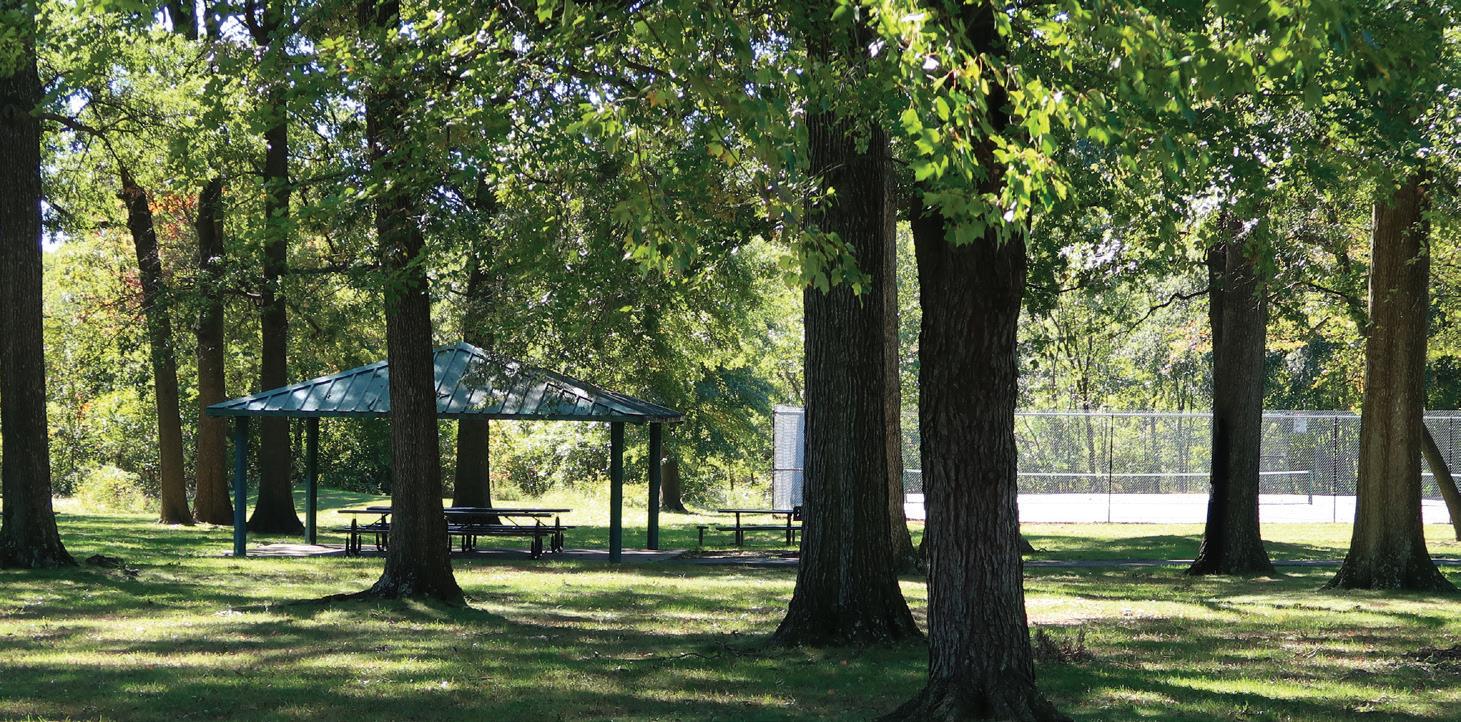
Try having a family picnic together either in the backyard or at a park with open space to allow for physical distancing.
Due to physical distancing, some camps have had to cancel their typical summer programming. Many camps however are now offering new virtual programs for kids. Check out www.pgparks.com for virtual summer recreation programs with Prince George’s County Department of Parks and Recreation.
While family movie night is a fun way to spend the evening for families, screen fatigue is real and there are many other ways for families to spend time together without the screen. Summer allows for more time for kids and families to be creative and try new things. Make art together, have a family game night, build forts together, read books, and cook a meal together are all ways that families can spend time together away from their screens.
While kids thrive on structure, they also benefit from having unstructured time to play too. Unstructured play allows kids time to use their imagination and creativity to come up with their own games, tell stories, make music, etc. without any pressure of having to do it “just right.”
As of 5:00 p.m. on Friday, June 5, many of Maryland’s jurisdictions moved forward to stage two of Governor Larry Hogan’s Maryland Strong: Roadmap to Recovery Plan. The second phase further opens more businesses and personal services with certain requirements. More information about the Governor’s recovery plan can be found at governor. maryland.gov/recovery.
As announced by County Executive Angela Alsobrooks, Prince George’s County is not yet ready to move to stage two and will remain in a modified stage one phase which began on Monday, June 1, 2020.
Highlights of the County’s modified stage one plan include:
• Face coverings must be worn inside all businesses and businesses must continue to enforce social distancing;
• Retail stores may reopen with curbside pick-up only;
• Barber shops and hair salons may reopen for hair services by appointment only with one (1) customer per 200 square feet. Customers will not be allowed to wait inside the establishment;
• Restaurants may open with outdoor dining only with no more than six (6) people seated at a table. Tables must be at least six (6) feet apart and no more than 50 people will be permitted at the restaurant regardless of space;
• Houses of worship may reopen for gatherings of ten (10) people or less or continue virtual services;
• Farmers Markets may reopen for carry-out only;
• Childcare facilities may reopen for essential employees and employees who are returning to work;
• Car washes may reopen with automated systems - drivers and passengers must remain inside the vehicle at all times; and
• Parks, golf courses, and tennis courts remain open with appropriate social distancing measures in place; basketball courts, playgrounds, fitness facilities, and pools will remain closed.
• Most if not all re-openings require following CDC guidelines including the use of PPE, face masks and social distancing. Further
information and requirements can be found at www. princegeorgescountymd.gov.
In response to the County Executive’s announcement, City services and practices will remain as they were from the notice issued on May 1.
All City buildings and facilities remain closed to the public. This includes City playgrounds, fit lots, and ball courts.
City staff in all departments will continue to process and respond to email and phone calls remotely. For contact information for all departments, please visit the City’s website. Many of the City’s services can still be conducted online or via phone.
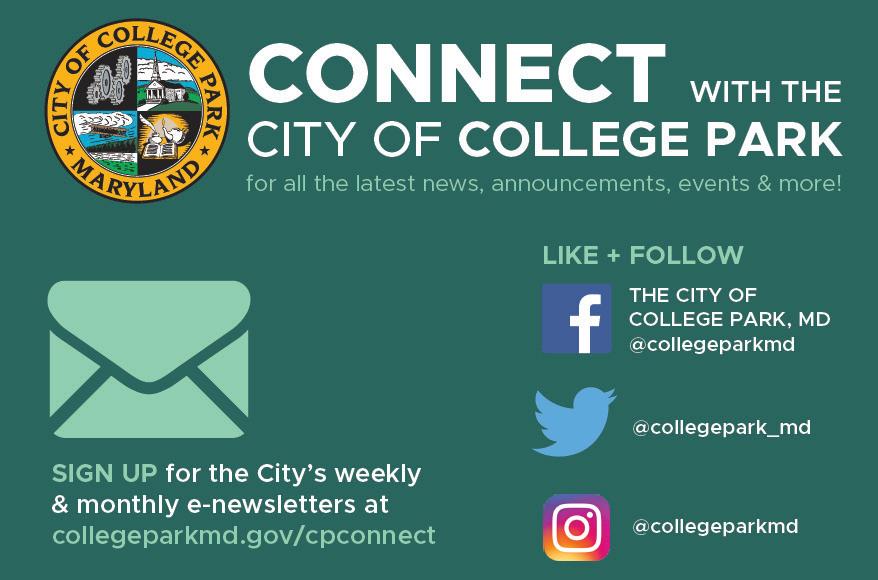
As a reminder, Seniors Transportation Services remains in service by appointment only for essential trips (medical appointments or medications which are vital or to purchase items that are essential for subsistence within the next 7-14 days only). Please call 301-345-8100 to make an appointment.
The City encourages restaurants to open with outdoor seating and will work with businesses and property owners to facilitate increasing space for seating, including, where feasible, to use part of the street right-of-way.
For all City related COVID-19 news and updates, please visit www.collegeparkmd.gov/covid19.
The City cooperates with the Maryland Department of Agriculture (MDA) to identify and control mosquito populations. MDA has canceled the spray portion of their mosquito control program for this season but MDA personnel will continue their monthly larviciding treatments to known areas of standing water to control mosquito larva by preventing their development into adult mosquitoes.
Take control of mosquitoes in your yard! Mosquitoes thrive in warm weather, but there are several things you can do to remove mosquito habitat from your yard.
Follow the three D’s to keep mosquitoes away:
We regret to announce the cancellation of the City’s annual Independence Day Celebration due to COVID-19 and the Governor’s executive order prohibiting gatherings of ten people or more. The health and safety of our residents are what’s most important to us as we continue to monitor the situation.
College Park was under-counted in the 2010 Census. According to the U.S. Census Bureau, nearly 1 million children across the U.S. were not counted. The Census population statistics are used to
Drain: Standing water attracts mosquitoes. Empty out any outside water containers near your home at least once per week. For permanent areas of standing water (ponds, rain barrels, etc), use a mosquito dunk or torpedo which releases an insect growth regulator in water that prevents adult mosquito development.
Dress: Dark clothing attracts mosquitoes. Wear long sleeves, long pants, and light-colored, loose-fitting clothing.
Defend: Properly apply an EPAregistered repellent when going outside.
For more tips to avoid mosquito bites, visit the MDA’s Mosquito Control website at mda.maryland. gov/plants-pests.
determine how to spend billions of dollars in federal and state funds annually. Much of that money funds programs that directly affect children including nutrition assistance, Head Start, special education, foster care, Medicaid, the Children’s Health Insurance Program, and more. Young children who live and sleep in College Park most of the time as well as newborns born on or before April 1, 2020 should be counted in College Park.
The City of College Park urges all households to fill out the form online, over the phone, or by mail. For more information, visit collegeparkmd.gov/census2020.

All information is current as of June 6.
Health Resources
Prince George’s County Health Department Coronavirus Hotline (8 a.m.8 p.m.): 301.883.6627
Maryland’s Helpline is available 24 hours/7 days a week to callers in need of crisis intervention, risk assessment for suicide, homicide or overdose prevention, support, guidance, and contact information for community behavioral health providers. Call 211, option 1, or text the word HOME to 741741

Prince George’s County Parks and Recreation Online Resource Center. Check out a variety of virtual indoor activities at pgparks.com/4841/ Online-Resource-Center
Helpful websites

Centers for Disease Control (CDC): cdc.gov/coronavirus
Maryland Department of Health: health.maryland.gov/ coronavirus
Prince George’s County Department of Health: health. mypgc.us/coronavirus
Maryland Department of Health Coronavirus Hotline (8 a.m. - 8 p.m.): 877.319.1525. After hours hotline: 410.795.7365

Resources
Prince George’s County Economic Development Corporation: 301.583.4650
Employ Prince George’s Inc. COVID-19 Hourly Employee Relief Fund: employpg.org/ covid19 or 301.618.8445
Food resources in the county: princegeorgescountymd. gov/CivicAlerts.aspx?AID=1632 or 301.909.6343
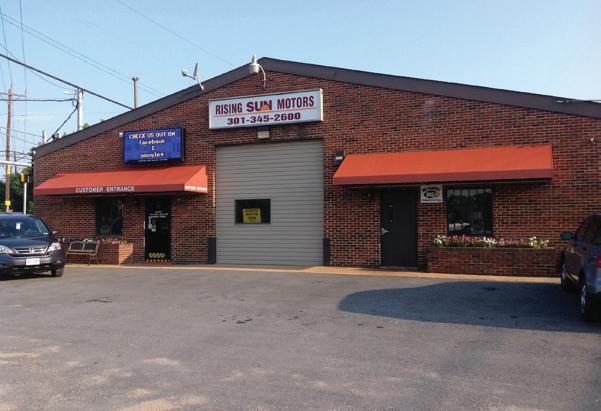

For updates on the City of College Park’s response to COVID-19 and a list of resources, go to collegeparkmd.gov/ covid19 or call 240.487-3500
College Park City-University
Partnership: For information about local business support and resources, go to collegeparkpartnership.org
Neighbors Listening was established to create a community of volunteers to provide a safety net for our aging
residents and help them to stay in their homes. Email neighborsconnect2neighbors@gmail. com or call 301.864.5267. If your call isn’t picked up, you won’t be able to leave a message, but you will get a same-day call back.
To register for a public focus group examining the City of College Park’s 5-year strategic plan, visit collegeparkmd.gov/ CivicAlerts.aspx?AID=142. The focus groups will meet on June 20 at 8:45 a.m., 10:45 a.m., and 12:00 p.m.
The City of College Park has extended the application deadline to join a city advisory board or committee to August 1, 2020. To view which boards and committees have vacancies and to submit an application, visit collegeparkmd. gov/186/boards-commissions
e UMD Student Crisis Fund supports students in financial distress. To apply for aid, go to crisisfund.umd.edu/gethelp. html; to donate, go to crisisfund.umd.edu
Graduate students with questions can see FAQs and get guidance at gradschool.umd.edu
For fee credit information, email billtalk@umd.edu
Meals on Wheels of the College Park Area: 301.474.1002
UMD Campus Food Pantry: campuspantry.umd.edu
Prince George’s County food pantries (searchable map): princegeorgescountymd. gov/1679/Food-Assistance or call 301.909.6343
Rotary International has organized volunteers throughout the DMV to help individuals who are in need of groceries and/or medication but are unable to leave home. Call 240.781.6586 for more information. For live assistance, call between 9 a.m. and 6 p.m.
Posh Cycling & Fitness. Free courses. See Facebook page: facebook.com/pg/poshcyclingandfitness.
OpenBarre online courses. Streaming for $15/month. View the schedule and find out more at openbarrestudios.com/online.
Numi Yoga. Zoom courses for a low drop-in fee. Find out more and sign up at numiyoga.com.
Orangetheory Fitness. Daily classes online at orangetheory. com/en-us/athome
Adult chair yoga for all bodies, all ages, all levels. Simple yoga movements to increase resilience, improve fitness and promote mindfulness; no experience necessary. Classes taught by Amalie Malochée, RYT 200, CPRAED certified. $25 for 5 weekly sessions. For more information, email yogiamalie@gmail.com

Prince George’s County Memorial Library System is offering a wide variety of online programs for children, teens and adults. For more information, go to pgcmls.info
Safely distanced while building skills, gaining fitness, and enjoying nature.
• Learn to Scull classes

• Youth and adult programs
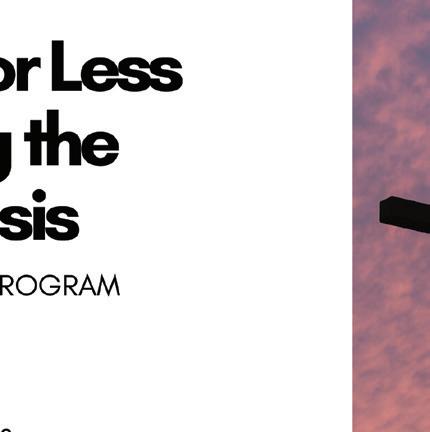
• BEGINNERS WELCOME!

All activities are at Bladensburg Waterfront Park 4601 Annapolis Road, Bladensburg WashingtonRowingSchool.com 202-344-0886
College Park Arts Exchange is offering interactive arts opportunities online. For information and schedules visit cpae.org/arts
e College Park Arts Exchange book club will meet on Zoom to discuss Maid: Hard Work, Low Pay, and a Mother’s Will to Survive, by Stephanie Land. Tuesday, June 16 at 7 p.m. Email info@cpae.org for the Zoom link.

Join College Park’s own Eric Maring’s singalongs for children and livestreamed concerts (Saturdays at 9 p.m.) at maringmusic.com
To help make and donate masks, go to route1maskmatch. org and weneedmasks.org
The David C. Driskell Center for the Study of Visual Arts and Culture of African Americans and the African Diaspora at the University of Maryland presents the Romare Bearden: Artist as Activist and Visionary. This virtual exhibit examines how an African American artist agitated for social change through the power of his art and writing.
Contribute to a College Park card-writing campaign with a message of thanks to an essential worker. Send your cards to Essential Cards, 4815 Calvert Rd., PO Box #29, College Park, MD 20740. For more information, go to essentialcards.weebly.com
a rental property makes this difficult,” she said.
Keating noted that the majority of new homeowners in College Park are young couples, but added that there has not been an uptick in home sales during the pandemic. “I have talked to several landlords [and] owners and they all still have their tenants and have no plans of selling anytime soon,” she said.
David Dorsch owns three rental homes in College Park. He helped form the Prince George’s Property Owners Association (PGPOA), which organized to address the city’s drive to keep students from renting homes in the city. Dorsch said that PGPOA formed to fight the city’s decision to limit student rentals to three students per house.
Prince George’s County allows five unrelated people to occupy a home.
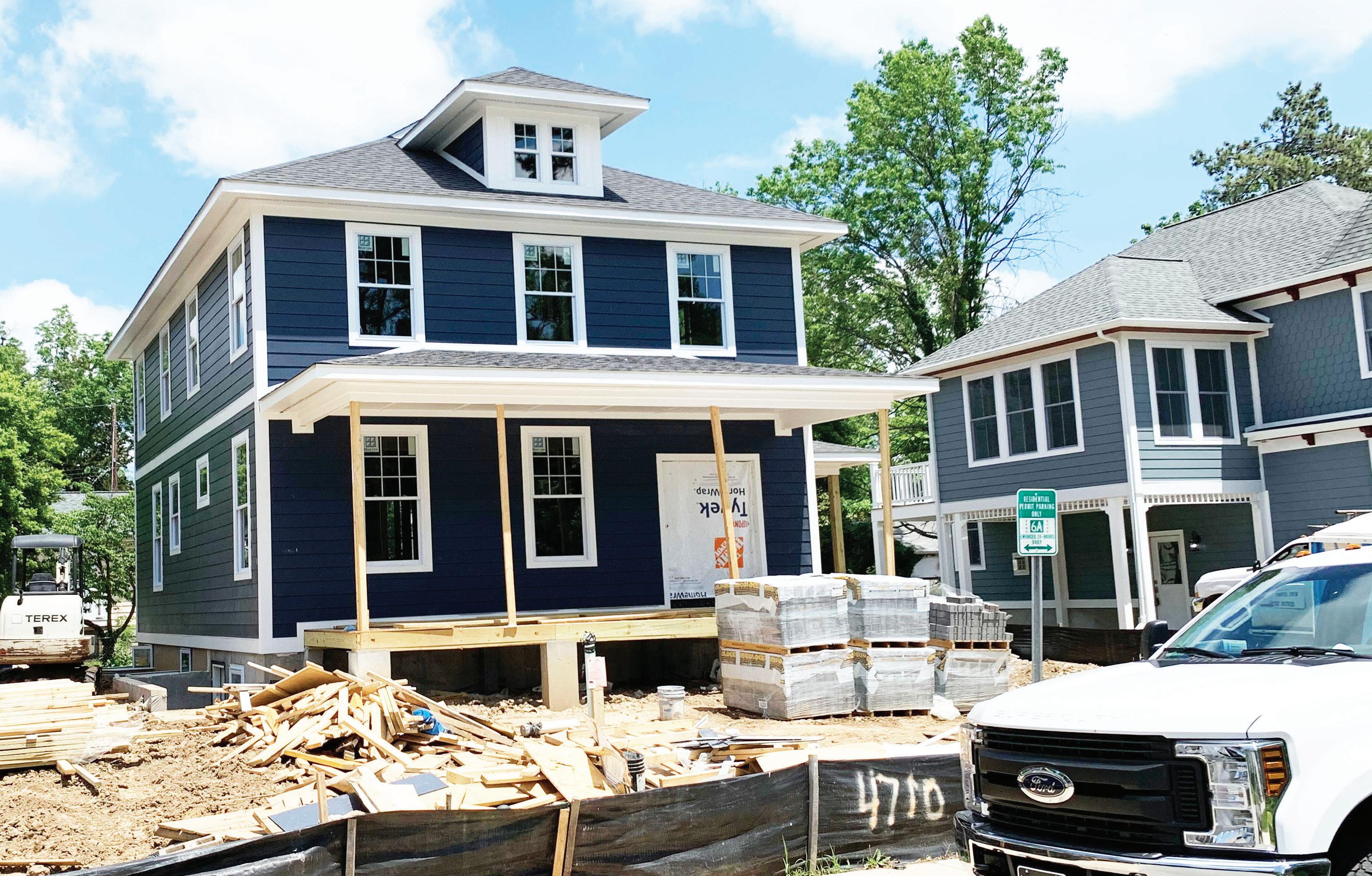 By Mark Goodson
By Mark Goodson
A limited inventory has allowed residential home prices to remain steady despite the growing realities of an economic downturn.
When Gov. Hogan closed nonessential businesses in March, residential real estate businesses remained open. “People need housing,” Karyn Keating said. “Sellers have put their homes on the market, and real estate agents are showing them, using precautions to stay safe.” Keating is a College Park resident and associate broker with PenFed Realty.
Keating attributes steady prices to College Park’s limited inventory. “People who are under pressure to buy are scrambling when new listings show up, and many homes sell for more than asking price.”
Home sale prices are not the only story in College Park’s residential real estate market,
though. University of Maryland (UMD) students who are not living in dorms are typically renters, and they keep the city’s rental market afloat. When the university closed due to the pandemic, students faced the difficult decision of whether to stay in College Park or to return home.
Patty Perillo, the vice president of Student Affairs at the university, sent a letter to all students with clear advice, writing, “Whether you reside in one of our off campus apartment complexes, a rented group house, South Campus Commons, University Courtyards, an off campus fraternity or sorority, or other housing in the City of College Park, we encourage you to move out and travel to your permanent home.”
Leaving proved to be inconvenient for some, however.
Jaaron Alston is a senior planning to graduate in the winter of 2020 with a Family Science ma-
jor. Alston was living at South Campus Commons when he received Perillo’s letter and was conflicted because he works for UMD Residential Facilities. “I have to work,” he said.
Alston, who now commutes from his parents’ home in Baltimore to College Park for work, had to buy a car in order to keep his job. “Rent may not be an issue, but that car is a new bill to pay, “ he said. And while the economic tradeoff wasn’t a deal breaker for Alston, commuting 40 miles to work has been difficult. “Paying rent in order to walk to work was better than not paying rent in order to afford a car,” he said.
Many students, including Sarah Joyce, a senior chemistry student, chose to remain in College Park’s Berwyn neighborhood. “I think Berwyn is generally a pretty rent friendly neighborhood,” she said. Joyce chose to stay in the home she was renting despite the univer-
sity’s encouraging her to leave. The house she is renting is going up for sale, but Joyce already had a plan in place when she got that news. “Even before [COVID-19] hit, I had decided to move back in with my parents and commute next year,” she said, adding, “Our landlord is pretty unresponsive and the house is nice, but it has a lot of issues.”
Students renting homes can change the character of a neighborhood, and this has been a consistent source of tension between the city and its residents. The city’s New Neighbor Homeownership Grant Program promotes the conversion of rentals to single-family homes by offering loans to candidate homeowners. A buyer may qualify for a $5,000 loan at closing if the property they are purchasing has been rented for at least two years. If the buyer then occupies the property for five years, the loan is forgiven. Terry Schum, the city’s planning director, said that the program has awarded two grants since February and that a third application is pending.
“We do from five to ten grants a year,” Schum said. “The last couple years, the city council has provided $50,000, but we haven’t used our current funding to take us to the end of June.”
Schum said that she would love to approve something closer to $100,000 in grant money, “but one of the things that holds us back is the amount of inventory that is available all the time.
And the caveat that it has to be
Of his properties, Dorsch said, “They are all still rented.” The tenants he has spoken with were confused by Perillo’s letter encouraging them to leave. They all decided to stay, choosing to quarantine with their housemates.
According to Dorsch, offcampus apartment complexes such as The Varsity and The Enclave have not drawn students out of the residential neighborhoods. But student apartments remain popular with developers. Three more student apartment complexes are in progress on Knox Road, Hartwick Road and in the 8500 block of Baltimore Avenue. And the city is continuing to promote purchases of primary residences, homes that will be occupied by owners.
Schum mentioned the newhome construction project on Howard Lane in Old Town. Buyers will need to sign an owner occupancy covenant with the city. Schum also pointed to the College Park City-University Partnership’s grant program, which offers $15,000 at closing to any city or UMD employee who buys a primary residence within city limits. Schum added that if that property was formerly rented, the maximum award to an owner-occupier would be $20,000.
Will these initiatives change the owner/renter ratio in neighborhoods close to the university? Will new apartment complex developments lure students west of Baltimore Avenue? Will the growing uncertainty about students returning in the fall alter the limited inventory in College Park? Take it from Dorsch, a UMD graduate who has lived in the College Park for 45 years: “The biggest thing you could say is that everything is very questionable.”
ing a broken tail light, and the incident escalated to the point of going to trial. According to a flyer created by church leaders, the vigil was a “non-violent demonstration of solidarity with George Floyd and other victims of racial terror.”
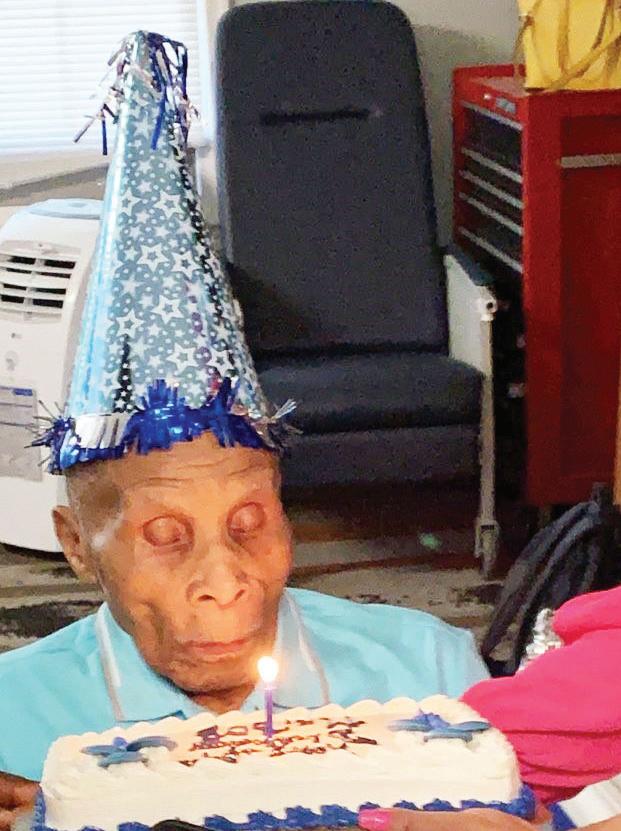
Starting May 21, Maryland began offering free COVID-19 testing for people with no symptoms. These tests are being administered at three locations. Testing is taking place at Timonium Fairgrounds, 2200 York Road, Timonium, Md. 21093; Hyattsville VEIP Station, 7401 Jefferson Avenue, Hyattsville, Md. 20785; and Glen Burnie VEIP Station, 721 East Ordnance Road, Curtis Bay, Md. 21226. Another testing site in Prince George’s County opened up at the Clinton vehicle emission inspection station.
Local faith communities gathered together to pray at the University Christian Church in Hyattsville on June 4. According to Reverend Nathan Hill, senior pastor at the church, about 350 individuals participated in the vigil. The group also stood in silence for nine minutes to mark the length of time Derek Chauvin, former officer with the Minneapolis Police Department, applied lethal pressure to George Floyd’s neck. Some attendees shared their experiences of overly aggressive policing that carried apparently racial undertones.
Kitty Williams, a University Christian Church member, described her son’s violent confrontation with police on his way home from studying with a friend.
Kema Harris, co-founder of Community Justice, a coalition that advocates for police accountability in Prince George’s County, spoke about her son Kevin’s run-in with the officers on the county’s police force. Kevin was stopped for hav-
Maryland administered more than 350,000 tests during May, with 5% of the population being tested. Prince George’s County leads Maryland in the number of confirmed COVID-19 cases, and as of press time, the county’s death toll exceeded 570.
On May 19, Gov. Larry Hogan issued an emergency order authorizing licensed pharmacists to order and administer tests, due to the increasing demand. CVS will open a number of drive-through testing sites (for information and locations, see cvs.com/ minuteclinic/covid-19-testing). You do not need a doctor’s referral to be tested.
Kylie RauAccording to Berwyn District Civic Association (BDCA) President Robert Catlin, the BDCA had meetings with the Maryland Department of Transportation State Highway Administration (MDOT SHA) five years ago to address pedestrian safety concerns at the junction of Greenbelt
Road and Rhode Island Avenue. The City of College Park requested that the MDOT SHA evaluate the installation of medians at Greenbelt Road and Rhode Island Avenue to calm traffic and enhance safety for pedestrians crossing Greenbelt Road.
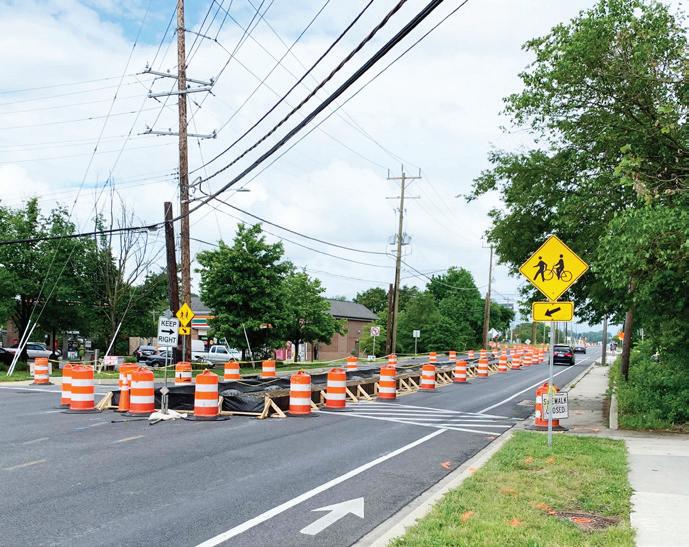
The Maryland Department of Transportation State Highway Administration (MDOT SHA) is moving forward with improvements to Route 1 (Baltimore Avenue) from College Avenue to University Boulevard. This project will support current and future development and improve traffic operations and safety for motorists, bicyclists and pedestrians along Route 1.
This year’s Memorial Day ceremony at the College Park Veterans Memorial was cancelled. So the College Park Memorial Committee purchased signs, and Boy Scout Troop 740 distributed them around the city. The scouts distributed 200 signs in the city’s four districts, with a single scout assigned to each district so all could practice safe social distancing. “Many additional scouts were disappointed that they could not participate,” said Loren LaVoy, the troop’s scoutmaster.
Lavoy said that scouts from Troop 740 have been helping maintain the memorial for almost 20 years. “They support the ceremonies
for veterans and Memorial Day to include helping with the setup, ushering, passing out water and special recognitions, maintaining and performing the role of lone POW/MIA flag bearer,” Lavoy wrote in an email.
It began when College Park residents Larissa Olson and Mia Ivatury saw peers posting positive messages using chalk on sidewalks. With so many children in their neighborhood, they decided to get on board.
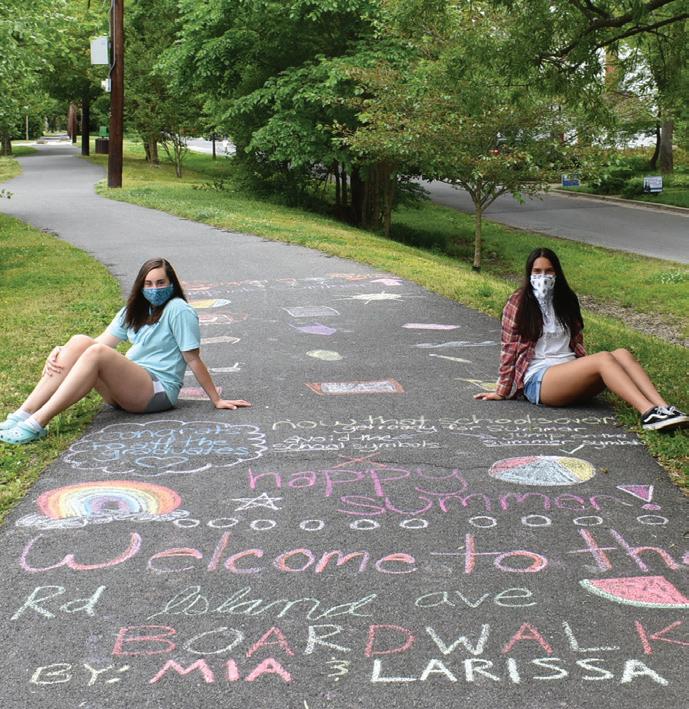
Engaging children on the Rhode Island Avenue Trolley Trail is not a new enterprise for the two friends. “We create activities and decorate the Trolley Trail about once a week and it usually takes us about 1 to 2 hours,” Ivatury wrote in an email, adding, “We love taking the time to make the kids in our neighborhood happy and it gives Larissa and [me] the opportunity to hang out together while social distancing.”
Larissa reports that feedback has been positive. “Today, a couple was walking by while we were drawing — they stopped us and we started talking. They said that they loved our art work and [they] added that we can’t fix the world but we can do as much as possible to make people happy. I hope that the little drawings we do every week are making some people happy because, in the end, that’s what matters.”
- Leaf Cleanup/Gutter Cleaning
- Landscape Spruce Ups/Clean Ups
- Bed, Weeding, Edging and Mulching
- Pruning/Trimming (Natural or Formal)
- Tree and Shrub Removal
- Planting Trees, Shrubs, Perennials and Bulbs
- Mulch/Topsoil/Compost/Gravel
- Transplanting Small Trees, Shrubs and Perennials
- Seasoned Split Firewood Available
- Lawn Cutting, Aerating and Fertilizing
- Grading and Drainage Projects
- Storm Cleanup and Debris Hauling
not speaking with each other and standing six-feet apart, it was very moving because it was a candlelight vigil, and we were still able to connect by lighting candles from each other.”
Her daughter agreed, noting that it had been a “rough week,” and she enjoyed having a quiet time and space to reflect with others about why they were there. She added that she liked seeing that “there are more people that care about this than people that look like us. That is really important to me.”
At the June 2 city council work session meeting, Councilmember Fazlul Kabir (District 1) invited his colleagues to draft and approve a resolution acknowledging George Floyd’s tragic death and the importance of the relationship between the community and police.
“I think all residents still have questions about public safety,” Kabir said, adding, “We are working on having a virtual
community policing meeting.”
Councilmember P.J. Brennan (District 2) agreed, adding that “diversity and policing is a complicated and dynamic discussion.” He suggested that the city could implement unconscious bias training.
Councilmember Maria Mackie (District 4) called upon parents to teach their children to love all people, as her parents taught her.
“I remember when the Reverend Dr. Martin Luther King was murdered,” she wrote in an emailed statement. “It was the first time I saw my father cry. I was a little girl and I remember my father saying to me that this country has lost a great man. There were riots in D.C. [at the time], it wasn’t safe. I was afraid. Adults should think about how their actions are perceived by our youngest citizens.”
“The last couple of days have been very hard for me to sleep, thinking about what occurred to Mr. George Floyd,” said a visibly distraught Councilmember Denise Mitchell (District 4) during the June 2
meeting. “...I’m tired of hearing of the continuous killing of our black men...we need to have real conversations with each other face-to-face and I hope we can do something within the next month because I’m tired of being tired.”
The next day, residents who shared Mitchell’s sense of distress, including College Park Mayor Patrick Wojahn, flocked to Baltimore Avenue with signs to protest police brutality and racial injustice. Residents at the evening vigil expressed anguish, as well.
Johnson stated that promoting peace and healing was his main motive for holding the event.
“I realized how important it was, at least for me, to be with our immediate community,” he said. “As wonderful as it was to protest, and it was great being around such a large group of people from all over, there was something about wanting to be with the people in our immediate community to have a witness here.”
Uzoma Ariguzo, a 25-yearold software engineering student at the university, attended the vigil. He also was looking for a more intimate community experience. He identified himself as both an African American male and a person of mixed race, who grew up in Prince George’s County and admitted to feeling uneasy with police.
“As a whole, I respect the Prince George’s County Police Department,” he said. “I think they have a lot of good [officers], but as with any police department around this country, there are bad eggs that make the rest of the police look not as well as they can be.”
Johnson wanted this vigil to send a message to those who were suffering, “We see you.”
“I think vigils are a powerful symbol,” the pastor said. “But vigils need to be followed up with action.”
“There are always things we could be doing to make our community better,” Wojahn said during the June 2 meeting. “We can engage in a dialogue with police and with the community and encourage them to let us know how we can do better here in College Park.”
“The city has been part of a cohort of local officials working with the Metropolitan Washington Council of Governments and the Government Alliance on Race and Equity ,” the mayor wrote in an email, “to review our practices and policies to ensure that we address potential bias and that our staff address the unique needs of the diverse members of our greater College Park community. Our goal is to promote equity and ensure that all residents and visitors feel welcome.”
Kabir also followed up with a statement confirming that the city council has drafted a resolution condemning “all forms of racism, bigotry, systemic oppression following the horrific homicide incident of George Floyd.”
“We should engage our community in a serious dialogue and explore ways to improve fairness and justice for all residents and work towards a healthier community-police relationship,” he explained. “Towards that goal, I am working to set up a community listening session to hear ideas from the residents in a few days.“
When the vigil had ended, Johnson blew out his candle and invited everyone to continue the discussion.
Editor’s Note: The College Park Here & Now recognizes the importance of the issues before us and will be bringing you local news and thought pieces about the city’s actions to address racial injustice.

“I think vigils are a powerful symbol. But vigils need to be followed up with action.”
Rev. Timothy Johnson Pastor at St. Andrew’s Episcopal Church in College Park
Gailes Violin Shop has been in College Park for 45 years and normally has a constant stream of customers from Maryland, Delaware, Pennsylvania and Virginia, said co-owner Betty Gailes. The store was staffed by 12 employees, including three luthiers (people who make or repair stringed instruments like guitars and violins), before the March 30 stay-at-home order.
The store switched to curbside service on March 23, but that ended when Gov. Larry Hogan issued the stay-at-home order. The store now accepts rental instrument returns and mails strings to customers, Gailes said.
“We laid off everybody, which was horrible, but we couldn’t have people working here.” She noted that refusing entry to customers who want to come in to shop or drop off a repair has been tough, as well.
Big Planet Comics is in similar straits. The business is 30 years old, said owner Peter Casazza. Casazza and his partner purchased it in 2007.
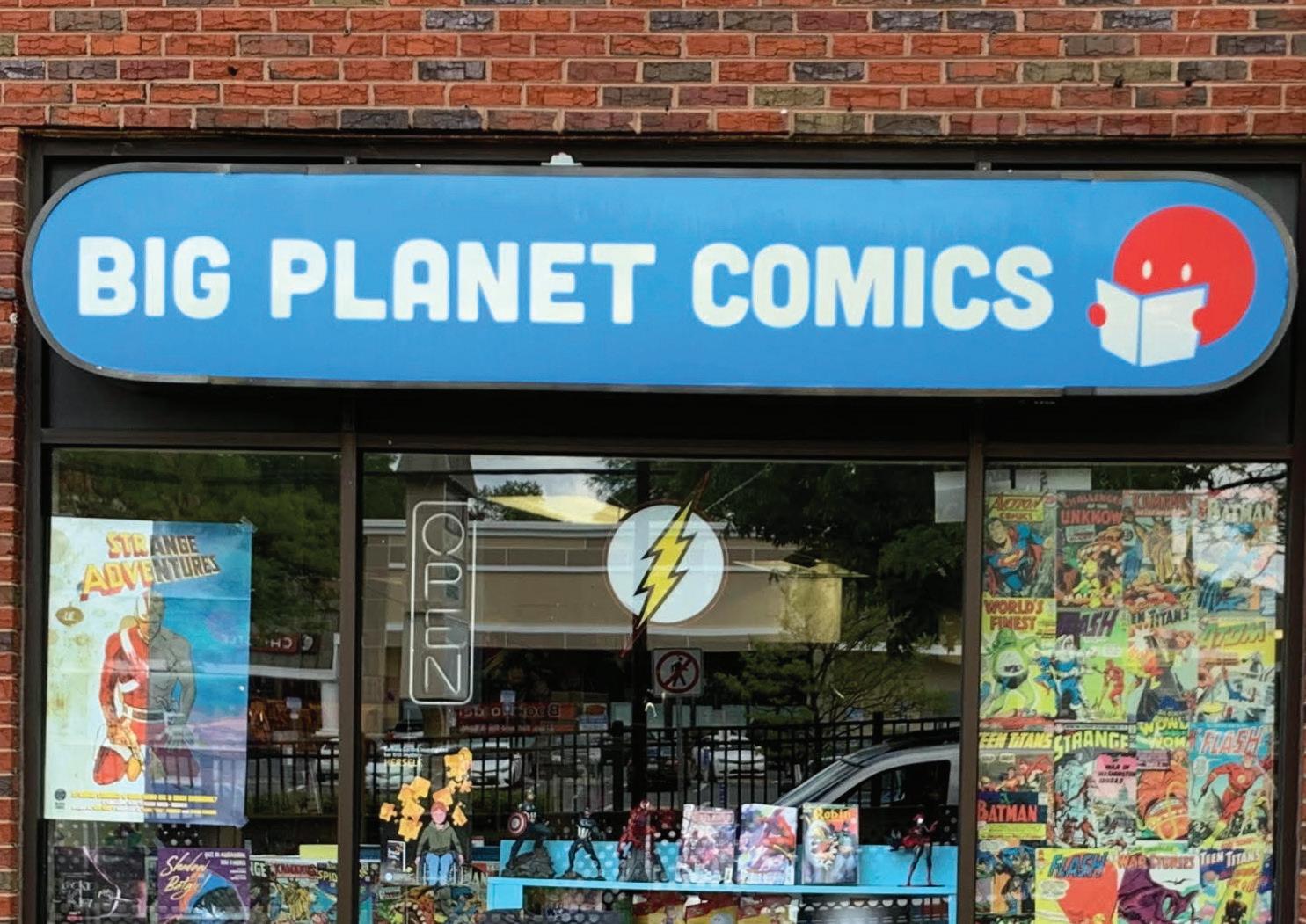
“We have an employee who has been here for 25 years, and [we] do a lot of business with students, residents who live in the area, kids and senior citizens,” he said. Big Planet Comics typically hosts in-store events, as well. According to Casazza, the store “has pretty much shut down,” except for some mail order business. Big Planet Comics has also been affected by supply chain problems.
“UPS is not delivering; if they see a closed sign they aren’t stopping. Sometimes they’re stopping shipping at the hubs” because they believe no one will be on hand at the store to accept delivery. Plus, there’s not as much to deliver.
“Printers and warehouses are shutting down for a month or so. It will be a while until they’re up and running. Basically, everyone else is waiting to see how things are going,” Casazza reported.







Vigilante Coffee Company, which is one of the city’s newest small businesses, felt the change coming before the first closure order, said founder and green coffee buyer Chris Vigilante.
“Towards the end of February, the vibe at the College Park café was that the [university] students ... would not be returning for spring semester. We then saw an 80% decline in sales beginning in March, and on March 16th we closed both of our cafés.”
The store pivoted to fulfilling online orders. “We scaled down to our roast and production team … and immediately implemented all WHO [World Health Organization] guidelines,” Vigilante said. Keeping a business afloat on a fraction of its normal revenue has been difficult, and Gailes’ attempts to get federal help — loans through the Small Business Administration’s emergency fund and Payroll Protection Program — point to processes laden with frustrations.
“I got on [the Small Business Administration loan] right away.





I started filling out the application, then they shut down the website for updates, and I had to start all over again.”
The timing of the closures “essentially eliminated spring business and put businesses in a summer pattern which is typically brutal,” noted Councilmember John Rigg (District 3). These business closures impact all members of the community, observed Councilmember Kate Kennedy (District 1). If College Park loses businesses, then housing prices may go down, and taxes will either go up, or the city will not be able to build amenities that people want. “The community as a whole will suffer,” Kennedy said. Local business owners have not given up, though, and they are thinking about what may happen when the governor’s closure orders are rolled back. Casazza isn’t expecting life to spring back to normal. “There’s no way there’s going to be a quick restart,” he said. He noted that suppliers will need to resume operations and


We have envelopes for correspondence, work orders for the job, proposals for the quote, brochures for advertising, directories for the club, newsletters for the newsworthy, postcards for the announcement, posters for the event, tickets for the show, programs for the concert, menus for the hungry, and stickers for identification.
Free parking and a free cup of coffee!
will be billing stores that don’t have money on hand. Customers will need disposable income and a feeling of safety in order to venture out and shop. Casazza can’t control the first three factors, but he has plans for the latter, including offering curbside pickup and
FROM PAGE 1
Hall, a neighboring warehouse and several homes.
A manufacturing plant on the property, which once produced plastic tubing, has not been used in quite some time. The property went to market in 2017. While it is currently zoned for industrial use, the owner is exploring rezoning for residential use, and as many as 200 town homes might be sited on the parcel. The owner has considered selling the property for various uses, including industrial storage, which could lead to an increased number of heavy-duty vehicles rumbling through the North College Park neighborhood.
Rezoning, however, is a complicated process that is enacted at the county level. Though the city cannot make zoning decisions, it can bring together community members to voice their concerns, and county officials may listen.

Residents discussed the property at a neighborhood meeting in February 2020, and reviewed a shortcut maneuver (called a text amendment) which allows an individual or group to edit the text of the zoning regulation. This would require sponsorship by a representative of the city government as well as community support. At one point, the city considered purchasing the property.
Neither the city council nor the mayor has officially provided sup-

installing plastic safety panels to safeguard against contact.
Early on, Gailes worked to build a cushion with her suppliers. “We knew we were going to have to shut down, so we started to pay off our suppliers, so if we had no money coming in, that wouldn’t be a big deal if we had to order stuff down the road.” She is considering scanning temperatures of customers when the store reopens.
For the city’s businesses to survive, members of the community also have a role to play. In addition to signing up for virtual services, ordering takeout and purchasing gift cards, residents can check with their favorite establishments for more ways to help. For example, Vigilante Coffee Company has established a staff emergency fund, and customers’ donations to the fund will support the café’s employees, Vigilante said.
Mayor Patrick Wojahn agrees. “I strongly encourage all members of the … community to do what you can to support our local businesses – our community depends on it,” he said. The interviews in this article took place in April.
port for rezoning the property. The property is less than a mile from the Greenbelt Metro station, so a town home development could constitute smart growth, particularly if a path were constructed between the development and the Metro station. College Park Mayor Patrick Wojahn weighed in on this, saying, “I personally hope we can look at opportunities for better walking and biking connections from the property to Metro.”
More homes in the neighborhood would mean more vehicles on the streets, even if incentives were put in place to keep numbers low. Rhode Island Avenue would provide the only exit from the development, and additional traffic signals along the avenue might be necessary to reduce congestion. Pedestrian safety would be a critical consideration, as well. The property is currently underutilized and has a minimal impact on the surrounding community. Residential development of the property would almost certainly bring more students to Paint Branch Elementary and Greenbelt Middle School. Bringing more residents to North College Park would support local businesses and encourage growth. Any change, whether it be rezoning for residential use or maintaining zoning and establishing new industrial use, will result in a range of impacts to the North College Park neighborhood.
As Toby Oerter got ready to begin his fiddle performance, he had to wait for the audience to settle. But instead of cheering him on from seats in front of a stage, his classmates were waiting, looking at their computer screens with their microphones muted.
“We can’t play all together,” Oerter, 13, explained. “Only one person can play and the rest have to be muted. … It makes it a lot less interactive than the way it would usually be.”
Virtual lessons and concerts are the new normal for the College Park Arts Exchange (CPAE). The city’s foremost organizer of arts events went digital in recent months because of the pandemic.
“We have tried to embrace digital platforms as much as possible to keep people safe, but many events are not possible,” Melissa Sites, CPAE’s director said.
Sites said that coordinating large art groups online can be challenging. She has helped performers in the College Park Youth Orchestra (CPYO) and Youth Band, Youth Choir and Vocetti, in Youth Music Traditions and Chorale, and in the chamber choir and women’s choir explore strategies for staying connected while the governor’s stay-at-home order is in effect. Graduating seniors from the orchestra’s chamber ensemble contributed to a masterful composite video performance of “The Swan” by Camille Saint-Saens. Alan Wonneberger, a longtime volunteer for CPYO, compiled and edited the video.
“Chorale has been meeting now and then to do happy hours and catch up, and the Director, Allison Hughes, has led (un)Choir twice, yet another of Allison’s projects,” Sites wrote. “[But] it is certainly better to perform together live.”
Nonetheless, artists report that they are participating as much as they can on the new platform.
“Toby is taking private violin lessons via Zoom and has had
CPYMT [College Park Youth Musical Traditions] practices via Zoom as well,” Oerter’s mother, Lara, wrote in an email.
“As a family we are listening to house concerts that are streamed live.”
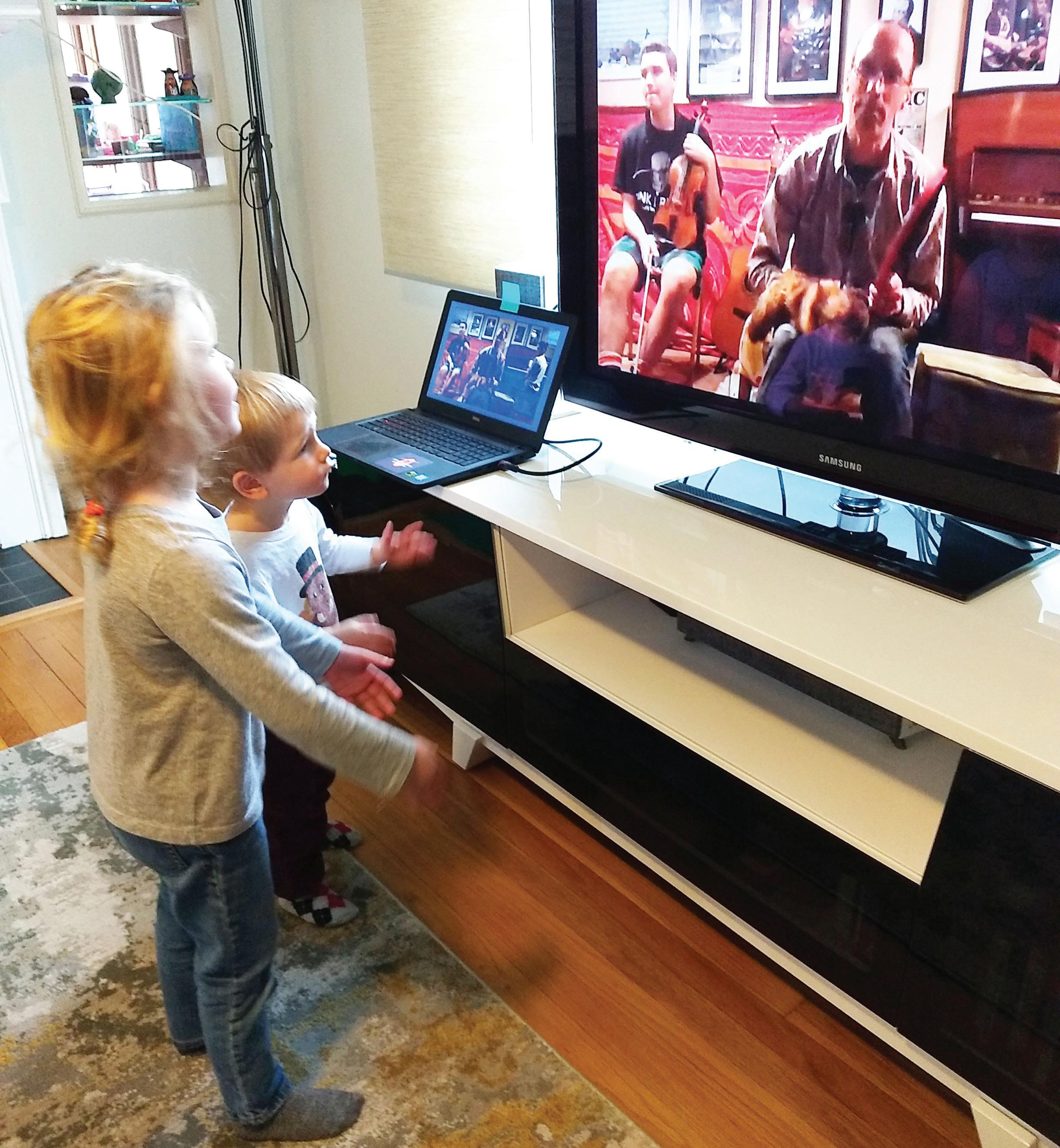
Eric Maring, a CPAE teacher, holds virtual concerts every week, which the Oerters said they enjoy watching.
Maring’s College Park Youth Musical Traditions group performed their spring concert virtually on May 17.
“This would usually be a performance and dance at the historic Old Parish House in our neighborhood,” Maring explained. “Instead, we had a Zoom share with families and friends of CPYMT, young musicians taking turns singing and passing around melodies, bringing songs to life with their families.”
The Oerters said they have been enjoying these events.
“We loved hearing a concert that was sponsored by the House of Musical Traditions that brought us to three different houses in the area for a combined concert of folk music,” Lara Oerter said.
“We are members of the Country Dance and Song Society (CDSS), one of the oldest folk organizations in the country, and we are mourning that we can’t attend a beloved family dance camp this summer.”
Through its donor base, CDSS has been able to pay the staff they hired for these summer camps at a 50% rate, and they have also put up a link on their website with information about how to support artists who have lost income as a result of the pandemic. CPAE has also paid instructors at the 50% rate for classes they could not teach in the spring, and at their full rate when they have been able to teach virtually.
“I have had fun picking out and purchasing albums from this list of freelance artists, some of whom play in my favorite contra dance bands,” Oerter said. “If I wanted to, I could also sign up for virtual lessons from an incredible musician who lives hundreds of miles away from me.”
“That is something I hadn’t considered doing before,” she added.
Oerter said most of her family’s relatives live in other parts of the country and have never been able to attend a CPYMT concert, but that they can now join via Zoom.
“It was special for us to have relatives and dear friends with us from Florida, New York, Illinois and New Hampshire who hadn’t seen Toby perform with this group before,” she said. This gave my husband and me a great excuse to make music with Toby.”
Oerter said she took out her oboe for the first time in almost a year to play a duet with her son at an online CPYMT event.
“This was a blast and I’m not sure it would have happened in other circumstances,” she said.
But even in current circumstances, Anne Gardner, a CPAE media specialist, said people are being very creative about producing online content and realizing new opportunities.
“We are excited to offer online drawing and creative writing workshops, as well as Zoom line dance classes and various live streamed performances on Facebook and YouTube,” she said. “Our drawing workshops by Racquel Keller, including
Draw like Matisse, Draw like Monet, Draw like Kahlo and Draw like O’Keeffe have been very popular with more than 20 participants each time.”
However, Gardner said musical groups are finding this time particularly challenging because it is hard for choirs and instrumental groups to make live music online due to the slight time lag in Zoom and other video conferencing software. The youth choirs are continuing to meet on Zoom to learn about music theory.
“For the art workshops, it’s always fun to supply the participants with cool art materials that they wouldn’t usually get to work with and see what they create with them,” Gardner said. “Online we have to rely on whatever they have on hand in their houses.”
Sites agreed that CPAE is looking forward to meeting in person again. But she said that some events are still running without interruptions.
“One program which has seen no impact is our book club,” she said. “We can get together on zoom and talk about the book and have fun without leaving our homes, so that has been great.”
She said another successful program is the “draw like great
artists” series led by Keller.
“Dozens of folks of all ages have enjoyed this program where we get together by Zoom and try to produce our own homemade versions of great works of art, using whatever art supplies we have on hand,” Sites said.
She noted that some activities aren’t as easy to replicate online, though.
“We are also offering Line Dancing, which is a little challenging if folks experience delays through the digital format,” Sites said. “Our long time Raq Sharqi partners offered an experimental online belly dance concert from the various dancers performing from their own spaces.”
College Park’s Cultural Connections and the AHA Kids series, which capitalize on bringing local talent together in local spaces, have been put on hold for the time being, but CPAE is exploring options for the fall.
“If fall brings more of the same we will focus on figuring out ways for our performing artists to present events safely and via digital platforms,” Sites said.
income.